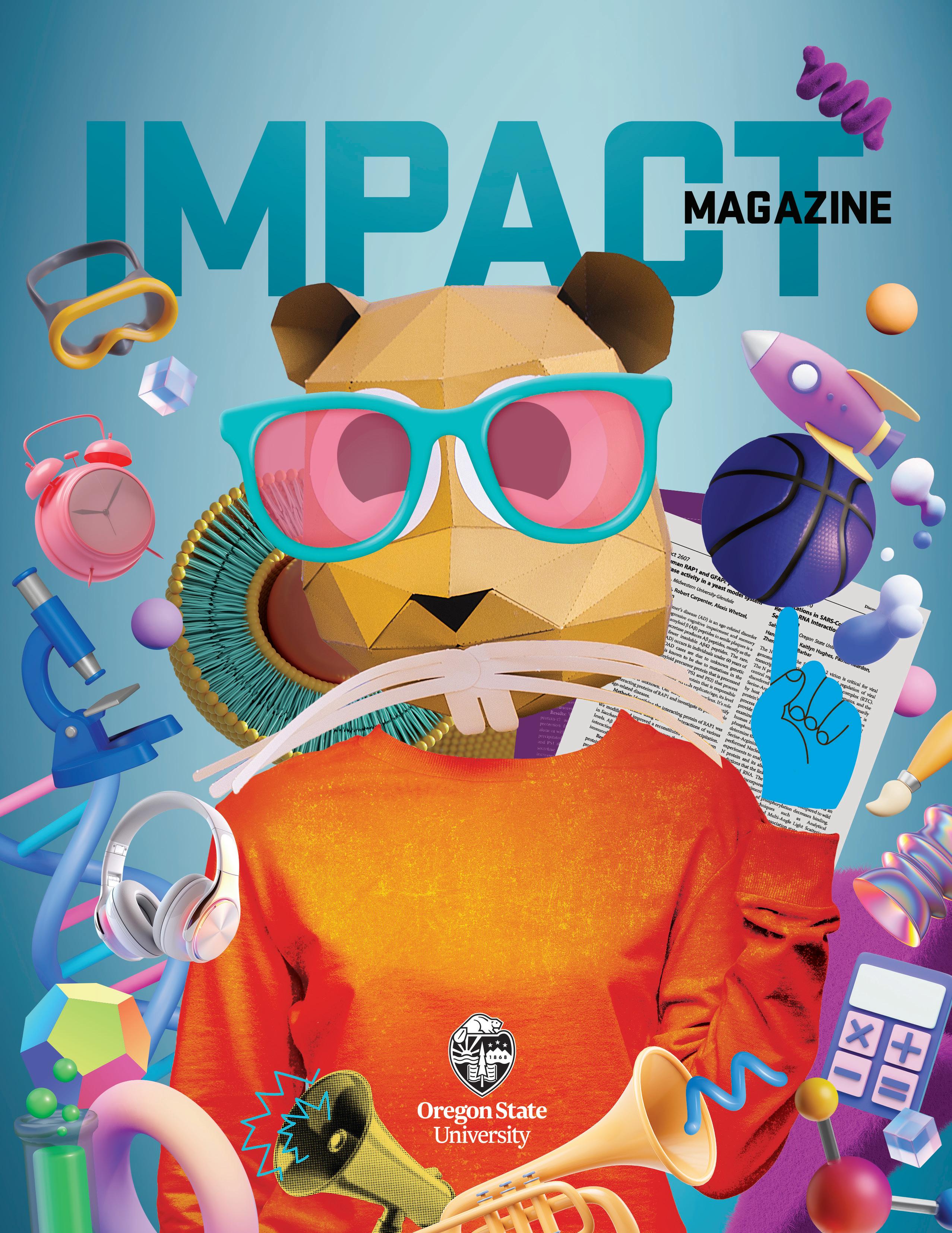
COLLEGE OF SCIENCE • 2024 SPECIAL EDITION
Editors
Tamara Cissna
Erica Martin
Writers
Hannah Ashton
Arie Henry
Editorial Interns
Elana Roldan, Biology
Kaitlyn Hornbuckle, Computer Science
Luke Nearhood, Physics
Designer Sharon Betterton
College of Science
Eleanor Feingold, Dean
Publisher
College of Science 128 Kidder Hall
Oregon State University Corvallis, OR 97331
Read these stories and more at Impact online
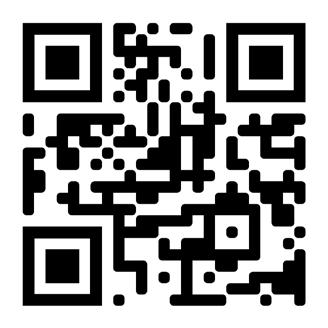
02
Meet the Dean and the team dedicated to student success
08
Driving change
Sahana’s dream: Fostering biomedical progress and inclusivity on campus
12
Expanding undergrad research
Fruit fly experience has students buzzing
19
Summer of science
Paid research sparks students’ passions
22
Building bridges
Spreading the love of science to everyone
04
Finding their purpose
Meet Team Science students driven to improve human health
10
What does a scientist look like?
We come in every shape, size and color
14
More than a major
Meet science undergrads who flourished inside and outside the classroom
20
In their words
We ask students about Oregon State University
24
College to career
Science grads who transformed OSU experiences into amazing careers
CONTENTS
Team Science Edition
We live and work on ancestral land.
Oregon State University in Corvallis is located within the traditional homelands of the Marys River or Ampinefu Band of Kalapuya. Following the Willamette Valley Treaty of 1855, Kalapuya people were forcibly removed to reservations in Western Oregon. Today, living descendants of these people are part of the Confederated Tribes of Grand Ronde Community of Oregon and the Confederated Tribes of the Siletz Indians. Indigenous people are valued, contributing members of the Oregon
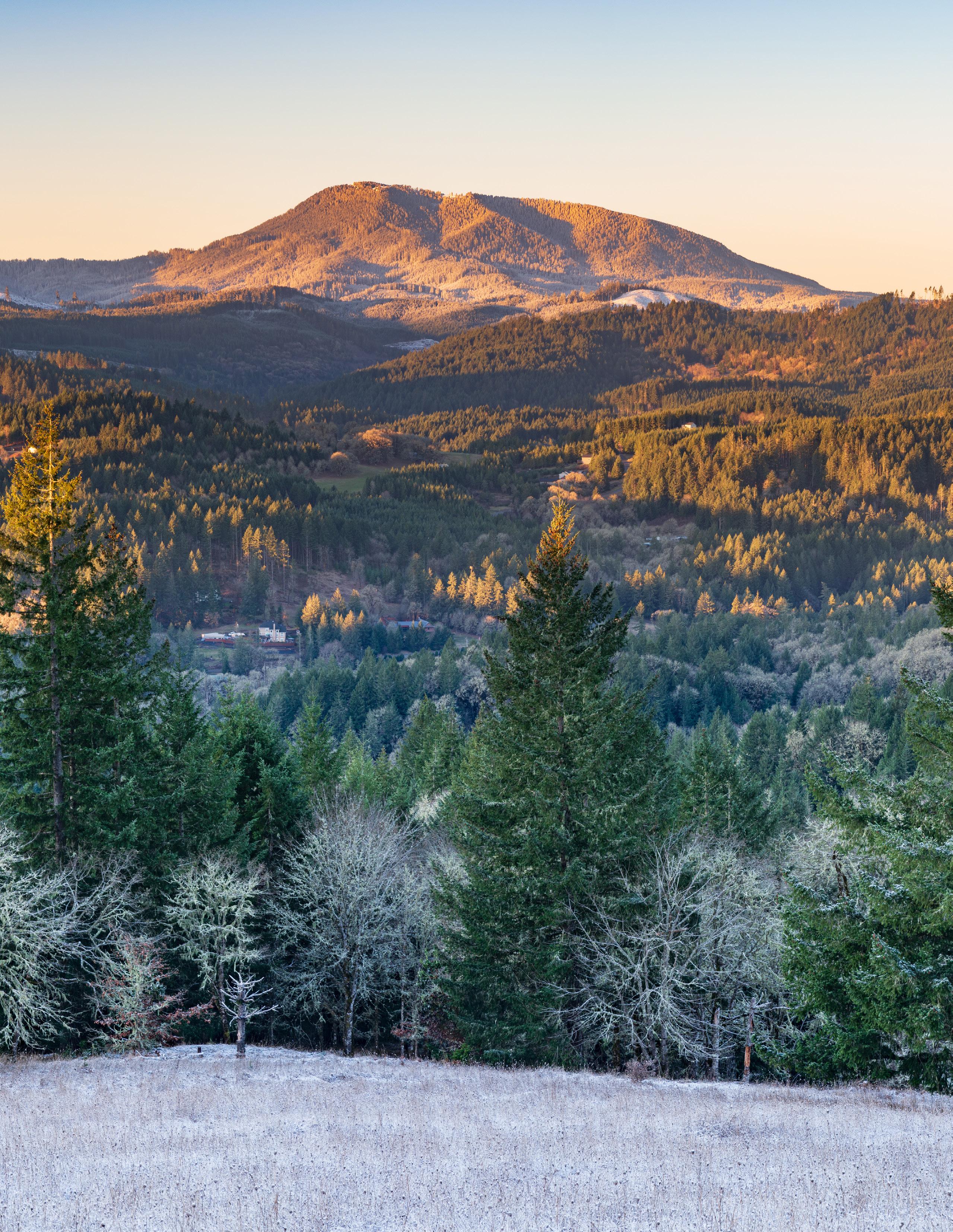
State community and represent multiple sovereign tribes among students, faculty, staff and alumni.
We are responsible for understanding the continuing impact of that history on these communities. We are committed— in the spirit of self-reflection, learning, reconciliation and partnership—to ensure that this institution of higher learning will be of enduring benefit, not only to Oregon, but also to the people on whose ancestral lands it is now located.
Marys Peak from Fitton Green, Corvallis. Photo by Peter K Ziminski
oregonstate.edu/land-acknowledgment IMPACT SPECIAL EDITION 2024 1
“Advancing knowledge must go hand in hand with promoting equity.”
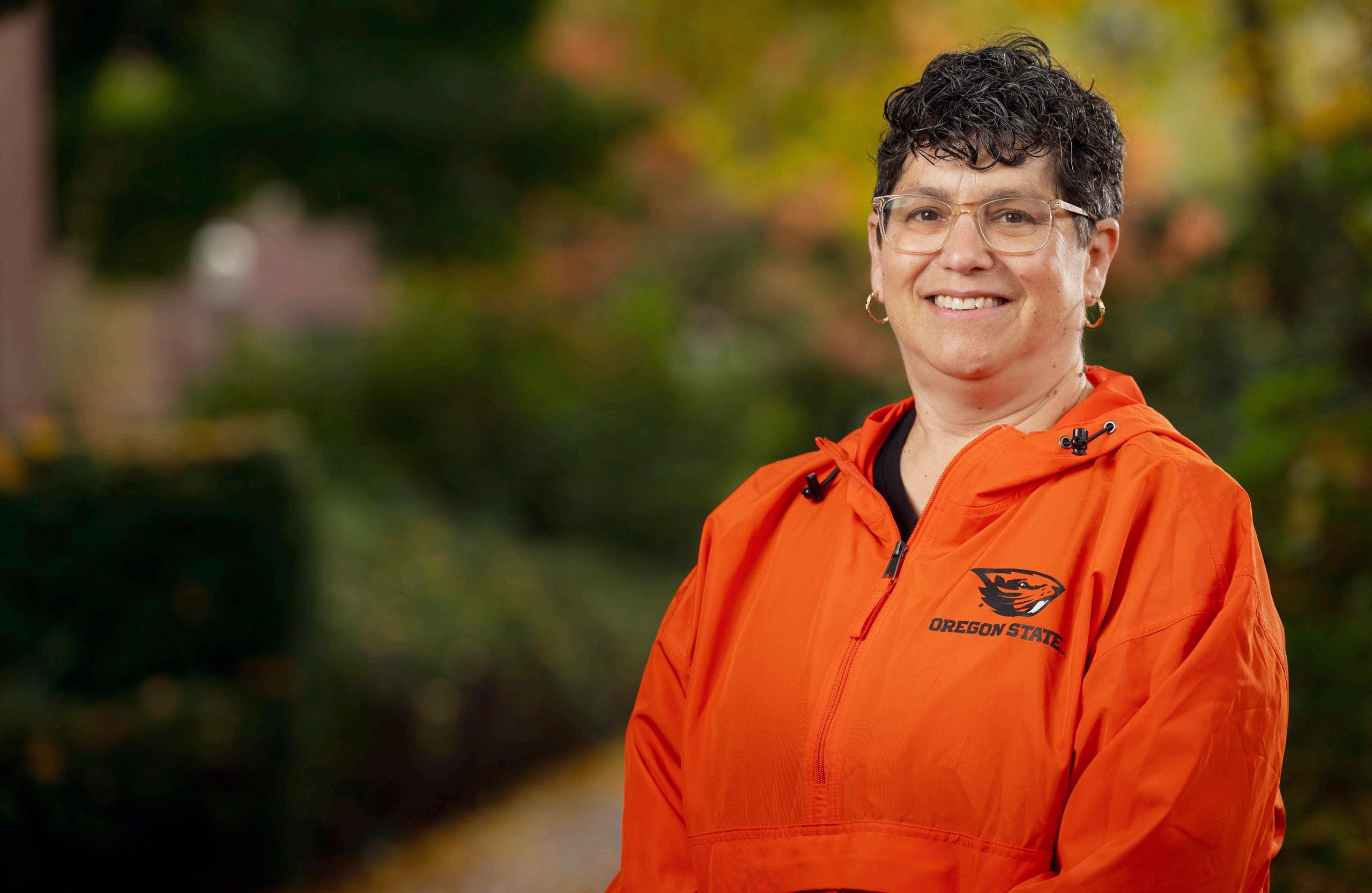
Dean Eleanor Feingold steps into leadership at OSU during a time filled with possibilities, bringing meaningful leadership experience and a passion for creating positive change in the world.
A statistical geneticist, Dean Feingold understands the power of science to shape a better future for individuals and communities.
At the University of Pittsburgh, she played a key role in building new degree programs in high-impact scientific and public health fields.
Her dedication to social justice, a guiding principle in the College of Science, reflects her perception that enhancing inclusion is an integral part of the scientific endeavor. She makes her commitment clear:
“Advancing knowledge and technology must go hand in hand with promoting equity in alignment with the university’s plan for prosperity widely shared. I see no purpose in advancing science if it doesn’t improve the well-being of as many people as possible,” she said.
Her research focuses on the genetics of cleft lip and palate, Alzheimer’s disease and the interaction between environmental contaminants and reproductive processes in women. She is also passionate about teaching, especially data science and science communication, and improving student success and science education.
“Improving STEM education is so critical in the world right now, and many creative initiatives are happening here. I am excited about what OSU is doing to promote student success and am thrilled to be able to contribute to those initiatives,” she said.
Feingold began her academic journey at MIT, where she designed her own major by integrating writing, mathematics and public policy. She then pursued a Ph.D. in statistics at Stanford—an educational path driven by her interest in applying quantitative methods to real-world problems.
She is fascinated by the College’s wideranging research, which spans from fundamental inquiries about how life and the universe work to community-engaged
research addressing immediate and future challenges. The College inspires solutions to society’s greatest challenges—creating climate change solutions, improving animal and human health through data science, developing sustainable materials and creating new insights and tools to improve learning.
Feingold looks forward to the many opportunities to lead an active lifestyle in Corvallis. She enjoys vigorous activities like hiking and cycling—and also playing the viola.
She is eager to collaborate with the faculty, staff and students at Oregon State—to spread the power of science and make the world a healthier, more equitable place.
“We aim to ensure that technological and scientific progress aligns with ethical and egalitarian goals. This involves a commitment to science education and to pursuing research that has a positive impact on both individuals and communities,” she said.
DEAN ELEANOR FEINGOLD
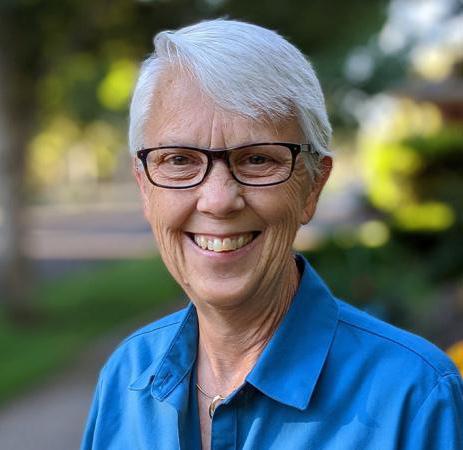
Carol McKiel (she/her)
Associate Director of Student Recruitment Carol McKiel provides information and guidance for prospective undergraduates exploring how Oregon State fits into their future plans.
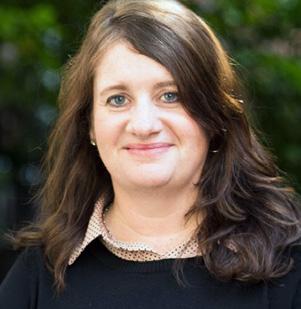
Jennifer Olarra (she/her)
Director of Advising Jen Olarra is responsible for College of Science scholarships, bacc core exceptions for science majors, registration, petitions for science majors and major exploration.
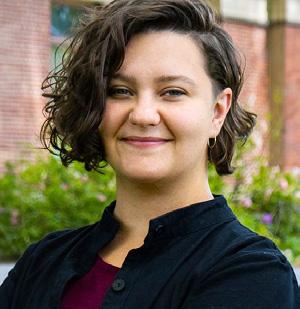
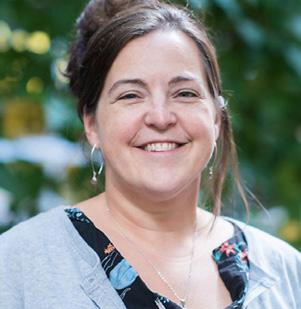
Devon Quick (she/her)
Devon Quick, the Learning Assistant Program Director, supports our larger science classes by helping science faculty integrate undergraduate Learning Assistants, who provide student support and facilitate student success.
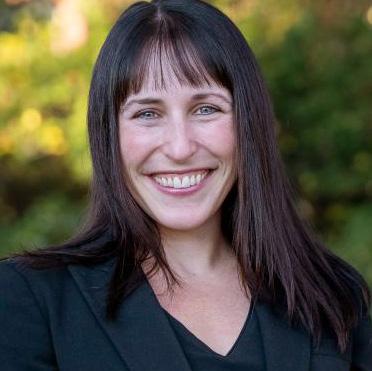
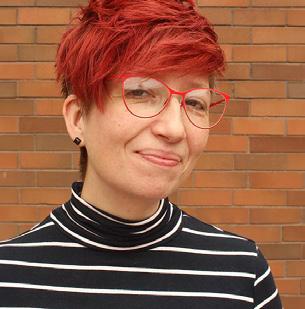
Gabs James (they/them)
Associate Director of Student Engagement Gabs James runs our undergrad research opportunities, provides community building through events and makes sure the Science Success Center is always a welcoming environment.
Kris Gage (they/them)
Our Student Success Coordinator, Kris Gage, provides academic success support, resource navigation and guidance for students in financial distress. They also coordinate summer new student orientations.
Jessica
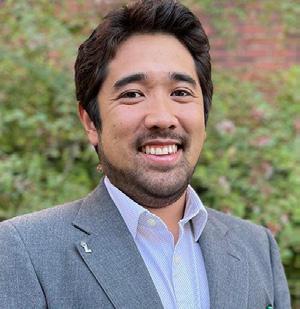
Jessica Siegel, our Associate Dean for Academic and Student Affairs, provides support for academic program questions and student academic affairs and leads our Science Success Center team.
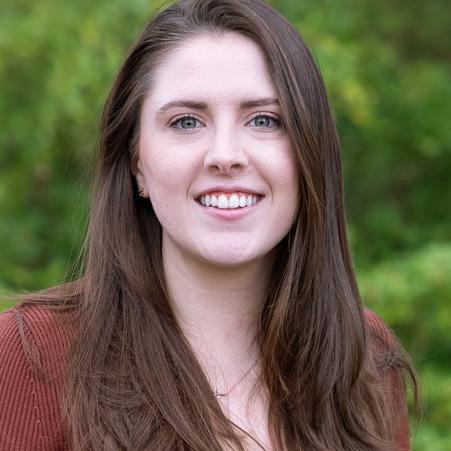
Rachel Palmer (she/her)
Kameron Kadooka (he/him)
Student Siegel Ambassadors and Peers (she/her)
As Assistant Director of Career Development, Rachel Palmer is a resource for science students in their career journeys—offering meetings, class presentations, workshops, events and many other initiatives.
Director for Equity, Access and Inclusion Kameron Kadooka works to assess and embed equity in all processes, procedures and policies in the College of Science; he also leads our feedback action team.
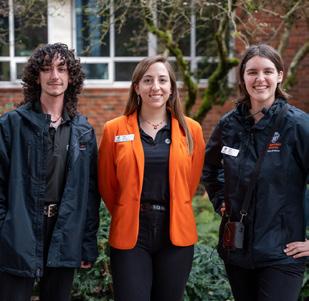
Science Ambassadors run tours, provide insight on student life and field prospective student questions. Our Peer Advisors help current students register, find College and campus resources and apply for opportunities.
IMPACT SPECIAL EDITION 2024 3
Finding their Purpose
Meet students dedicated to human health
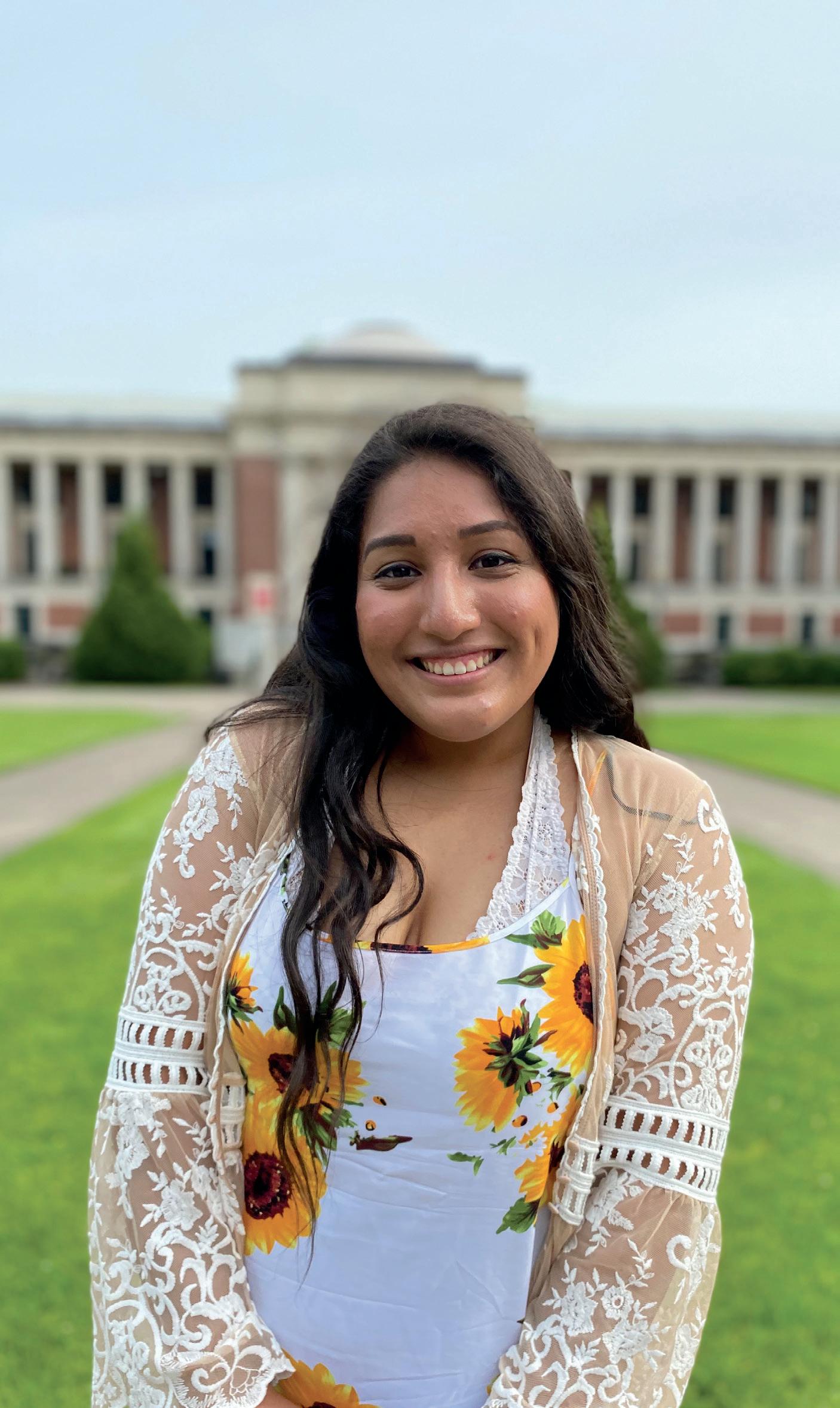
Facing adversity to help others
Jessica Lopez, BioHealth Sciences
Jessica Lopez , who graduated from OSU in the spring of 2023 with a bachelor’s degree in biohealth sciences, spent the worst of the pandemic caring for the most impacted population at a nursing home facility in Portland, Oregon.
A lot of overwhelmed health care providers burned out and quit during the pandemic. After commuting the 80 miles between OSU and Pacific Health and Rehabilitation in Portland for a year, Lopez said she knows how they felt.
“I kept seeing all these awful things— people on tubes, people being intubated, people in comas. A lot of these patients weren’t able to see their families as they were passing.”
However, the experience didn’t weaken her resolve to be a health care provider. It confirmed it. “It gave me a deeper look into health care, how at times it’s going to be a personal sacrifice,” she said.
What kept her going, she said, was how patients’ faces lit up when she entered the room. “It warmed my heart,” said Lopez. “It sparked more interest in a career in health care.”
Her family has never shied away in the face of adversity. “I grew up with a single mom, and through her and my grandma, I grew up with two strong women,” she said. “They taught me to pursue education. They encouraged me to go to college and pursue science.”
“My family, my culture and their history has definitely formed who I am and why I want to pursue my education,” she added, speaking of how her mother fled El Salvador during the civil war. “I am hoping to get into a physician’s assistant program, medical school or a master’s program.”
4 OREGON STATE UNIVERSITY COLLEGE OF SCIENCE
Kendra Yasui began her medical education during her early years working in her family’s orchard near Hood River, Oregon.
“I grew up picking and sorting cherries, and my coworkers and I all spoke in Spanish,” said Yasui. “I’ve seen a lot of folks who haven’t been able to access health care providers who speak their language or understand their culture, so my hope is to be able to provide health care for those folks in Spanish.”
Yasui graduated with two bachelor’s degrees through the OSU Honors College. One is in biohealth sciences with a minor in chemistry, an option in pre-medicine and a certificate in medical humanities. Her other degree is in Spanish.
“I’m most interested in emergency medicine,” Yasui said. “That’s an area where being able to speak to someone in their first language is particularly useful.”
The future “Dr. Yasui” Kendra Yasui, BioHealth Sciences
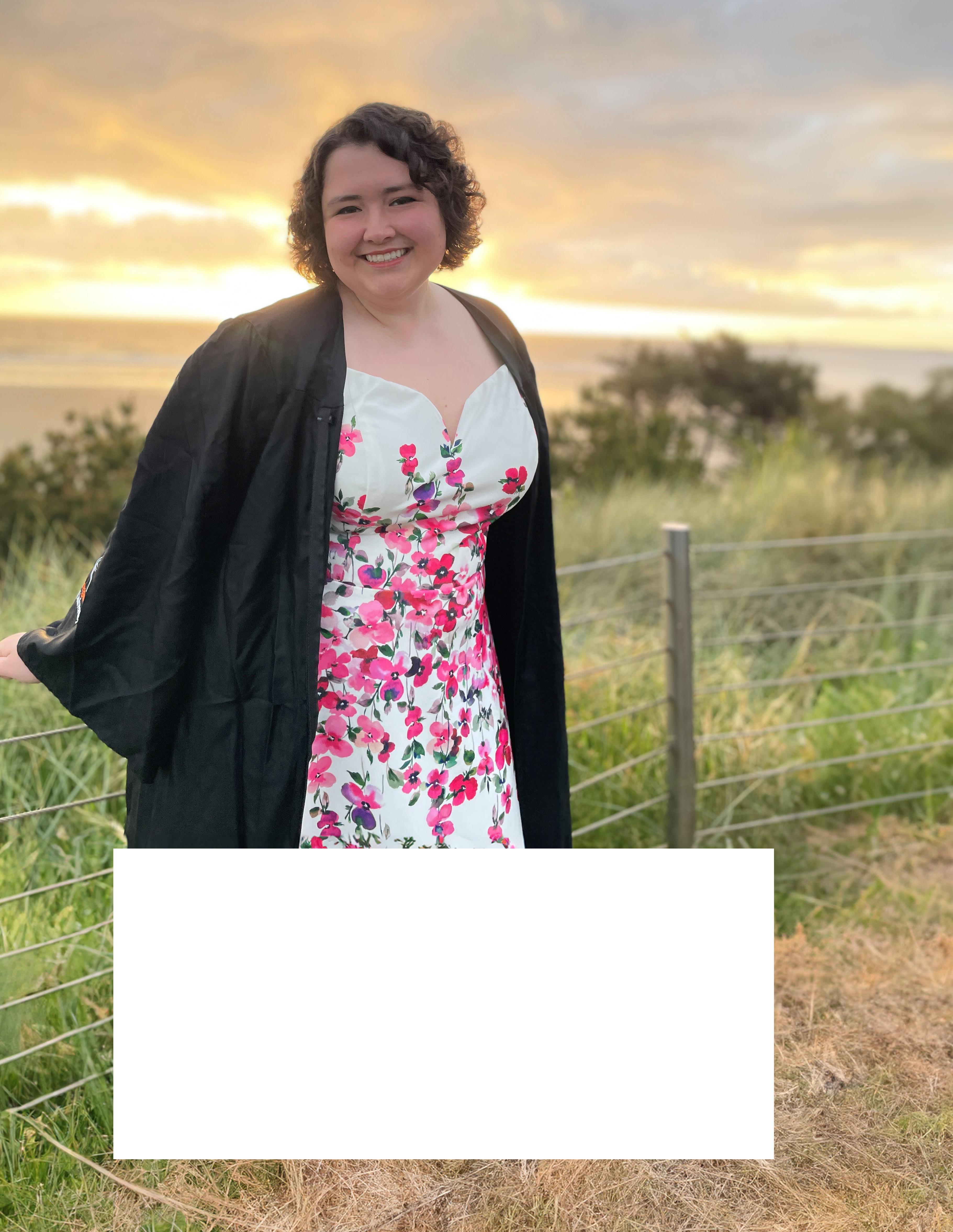
Like most university students in Yasui’s graduating class, her education was significantly affected by the pandemic.
She was working as a medication technician at Corvallis Caring Place, an assisted living facility, when the pandemic started. She put in excruciating hours for a year and a half, but that was only part of her work during the crisis.
She also began working for the Oregon Health Authority through the OSU Center for Health Innovation. The university and the state agency created what they called the Surge Bench Team to provide direct COVID assistance.
“For the first six months, I did case investigations,” she said. “I would call folks who tested positive for COVID and ask them questions, identifying who their contacts might have been, offering wraparound resources, that sort of thing.” She also helped people gain access to
vaccines if they had mobility issues and other barriers.
Her work took her to Umatilla County to take part in a rapid community assessment project through the Centers for Disease Control. Yasui surveyed community members, door-to-door, on their opinions about vaccines.
Yasui defended her Honors College thesis following graduation on using community voices to build public trust. Much of it was based on the feedback she received while working for the Oregon Health Authority.
For all the work she has put in through the rigors of her undergraduate education—especially in the grip of a health crisis of historic proportions— Yasui said she’s eager to keep going.
“If anything, I’m more excited to do more with more education.”
IMPACT SPECIAL EDITION 2024 5
Finding her communities
Ebunoluwa Morakinyo, Biochemistry and Molecular Biology
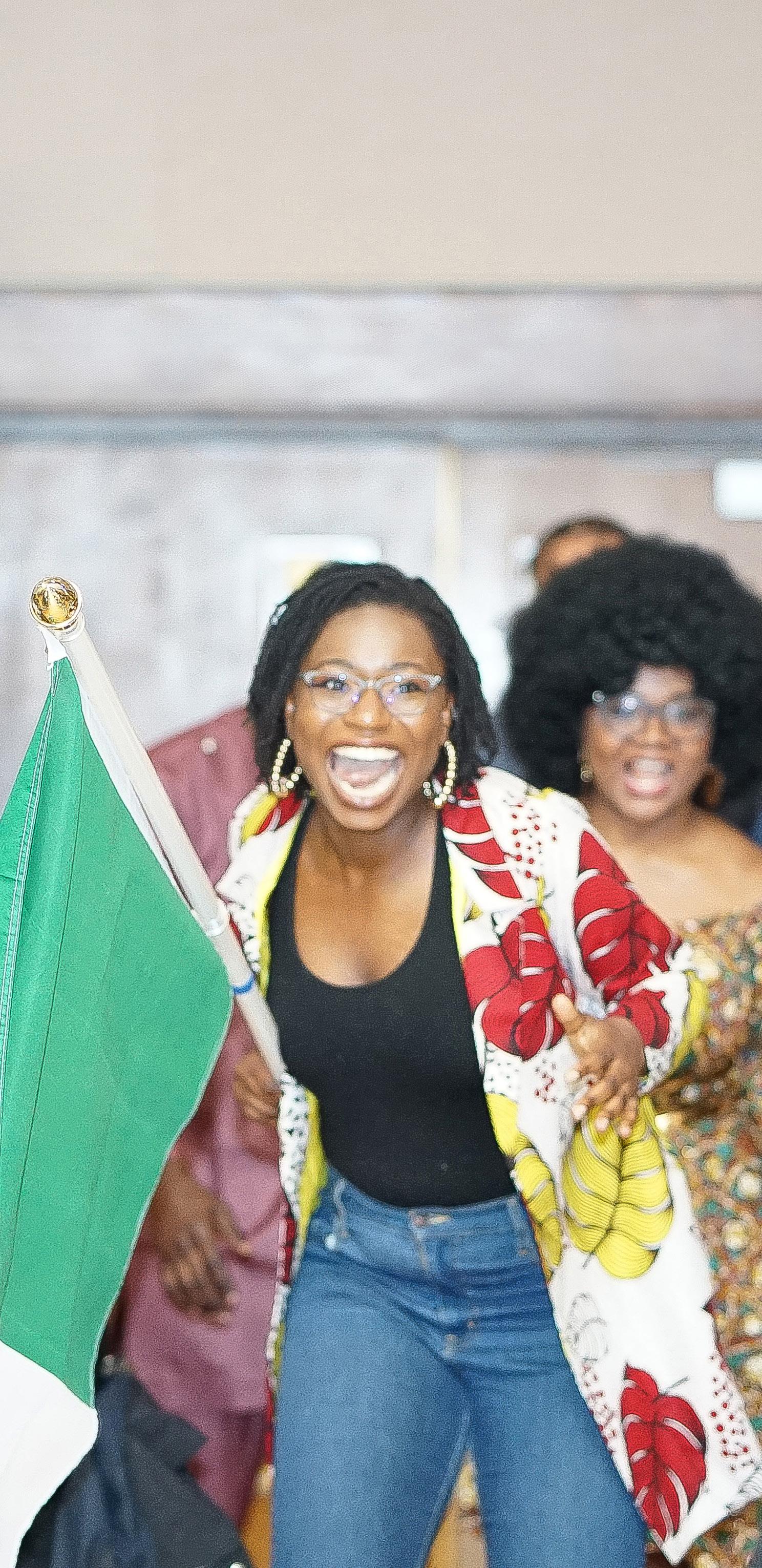
Preparing for medical school with aspirations to be a physician-scientist, Ebunoluwa Morakinyo wanted to take part in as many Oregon State opportunities as she could.
Born in Nigeria, Morakinyo immigrated to the United States when she was four years old after her father was accepted to Portland State University to get his Ph.D. in chemistry. Her mother has a master’s in computer science.
“Maybe partly because of my parents, I was already kind of geared towards the sciences but my strength was the biological type,” she said. “My mind is geared towards like, ‘What is really the story behind that? What are the processes going on?’”
She picked Oregon State because it was in-state and promotes research, something she was excited about.
“I liked how it has a culture of undergraduate research which is what I wanted to do.”
In 2021, she reached out to Arup Indra and Gitali Ganguli-Indra in the College of Pharmacy. The Indra Lab focuses on skin biology, skin inflammation, skin cancers and wound healing.
“The lab looks to investigate how wound healing could be enhanced to be faster because that is important in many medical applications. It can have dire consequences if not treated well,” she said. “That interested me because it was the application of biochemistry to a more tangible or immediate thing while seeing the impact on larger systems.”
Joining the lab was as simple as reaching out and attending a virtual lab meeting—and Morakinyo advises other students to reach out and find their own communities with shared passions.
“It goes a long way and helps you to feel not as alone. And through that, you can meet people who pour life into you and you get to pour life into them.”
6 OREGON STATE UNIVERSITY COLLEGE OF SCIENCE
Hustle and Brussel
Jessica Etter, Chemistry
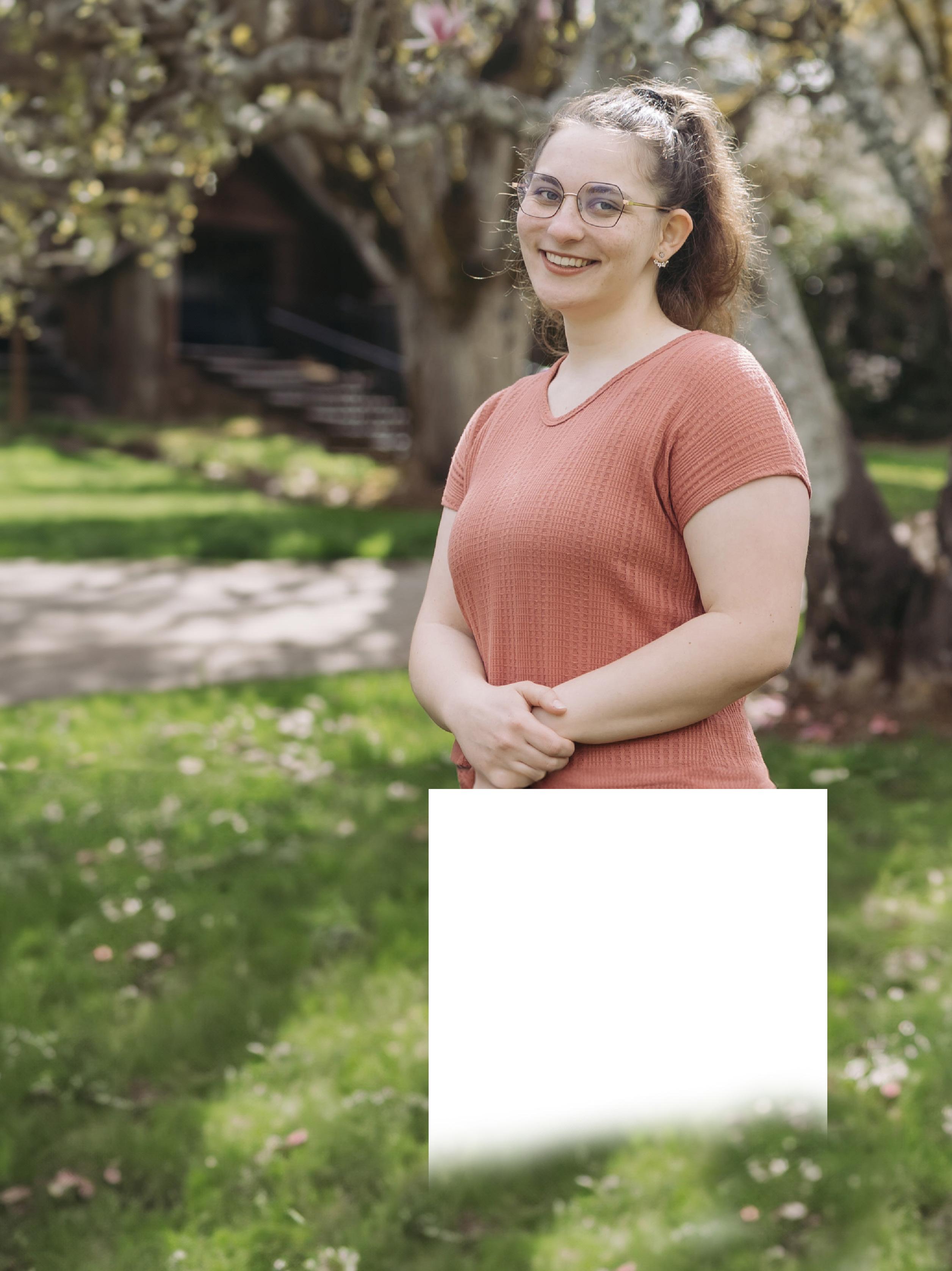
Graduating high school at 16 is no easy feat. Jessica Etter tackled it and found herself facing the additional challenge of starting college at 17. She began her journey at Oregon State as a chemistry student with the goal of becoming a forensic scientist; but when her journey revealed a passion for research, she continued on as a graduate student.
While she originally wanted to study forensic science after watching crime scene investigators on television, Etter found she was more interested in preventing deaths than investigating them thanks to her involvement in undergraduate research. Those opportunities drew her to Oregon State to begin with, as she felt the university had a stronger culture around encouraging first-year and sophomore students to participate in research than other universities.
Undergraduate research at Oregon State isn’t limited to individual colleges, either. Students in the College of Science are encouraged to explore laboratories across the university so they can have broad, collaborative experiences that better reflect the scientific world. Able to pick from a wide spread, Etter found an experimental haven in the Department of Environmental Molecular Toxicology.
There, she quantified cancer-preventing chemicals in certain vegetables, particularly Brussels sprouts. This set the groundwork for her later research beyond graduation. Now a master’s student, Etter has started a project that examines how to quantify signs of Parkinson’s disease in a person’s blood.
In her earlier years, being younger than her peers drew Etter to OSU’s STEM Leaders program, which provides
otherwise underserved students in science, technology, engineering and math the resources and experience they need to be successful in research.
“I would not have probably started research as early as I did if it wasn’t for the STEM Leaders program,” she said.
Etter considers the small size of the chemistry department at Oregon State a blessing because it gave her the ability to get to know the faculty well, particularly the analytical chemistry faculty. Her experience as an undergraduate greatly informed her decision to remain in the department for her Ph.D. and stick with those she knows will support her financially and academically.
“I know that there are people here who are supporting me and there are opportunities for me to be successful.”
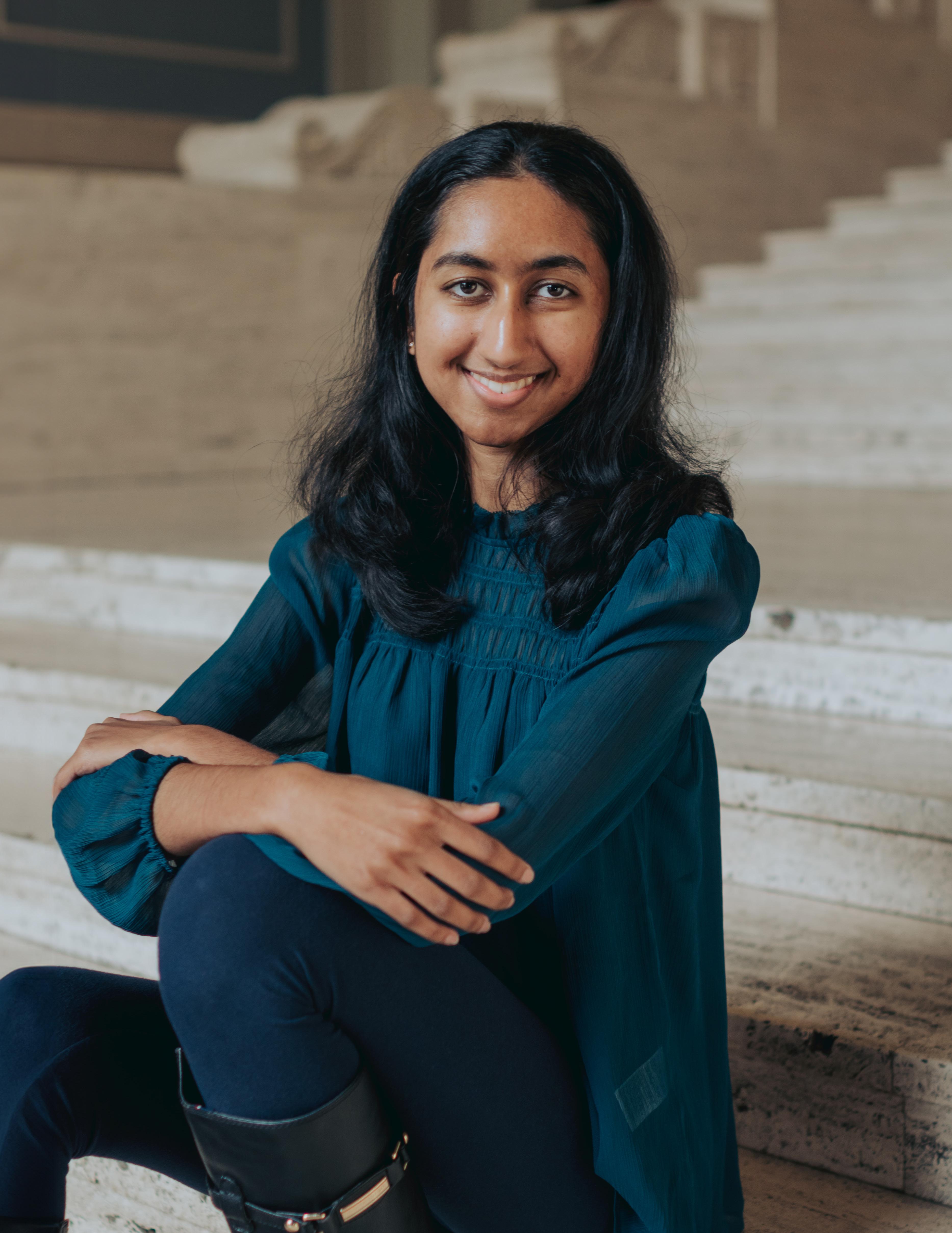
Driving Change Driving Change
Sahana Shah, Biochemistry and Biophysics
8 OREGON STATE UNIVERSITY COLLEGE OF SCIENCE
Sahana’s dream: Fostering biomedical progress and inclusivity on campus
Whether involved in cutting-edge biomedical research to advance our understanding of infectious diseases or championing a new disability cultural center, Sahana Shah embodies a commitment to making a positive impact on science and inclusivity.
Growing up in Corvallis alongside an autistic sister, Shah gained an appreciation for her family member’s unique perspectives and learning style. But she couldn’t help having concerns. “What is her future going to look like? Will she go to college?”
When Shah arrived at Oregon State as an Honors student, she immersed herself in her biochemistry and biophysics major, seeking to characterize the structure and function of the coronavirus N protein, and ran for the student House of Representatives. One of her main platforms? Helping establish a disability cultural center to better serve neurodiverse students.
Because of Shah’s passion for diversity, inclusion and support, she decided to run for office at OSU to help her advocate for more academic learning resources and extra support for those who don’t learn in a neurotypical way. Additionally, she wanted to spread awareness about conditions like autism on campus to build acceptance and a more accessible campus for all. She won the election with the most votes of any candidate.
Shah joined the long-term effort among student groups to bring the idea to life—introducing legislation to her colleagues in the Associated Students of OSU Congress, allocating money for the project in the House of Representatives, marketing their message and holding focus groups with students at the conclusion of the school year. They watched their idea evolve and expand
into a vision for a Disability Cultural Center, in addition to an International Student Center, with the ideas for both projects having come to ASOSU from the student body.
“We envision the centers having panel events, workshops and other programs that celebrate everyone’s backgrounds. That’s the biggest thing a cultural center could do: Educate and spread awareness,” she said. “If this comes to fruition, it would make me feel better about my sister going to college—I’d know she could have a place where she could feel safe.”
Shah also hopes to drive positive change by advancing our understanding of infectious diseases, advancing scientific knowledge and medical innovation. As an undergraduate engaged in cutting-edge biomedical research, she already contributes to potentially improving diagnostics, treatments and preventive measures.
She aspires to pursue a dual M.D./ Ph.D., focusing on biochemistry and biophysics. Her ultimate goal is to contribute significantly to biomedical research by unraveling the complex molecular mechanisms related to infectious diseases and identifying and developing new drug targets.
In her biochemistry and biophysics major, she digs into the details of how living things work in a program centered on the chemistry and physics of life processes that also integrates principles from chemistry, physics, mathematics, biochemistry, genetics and computer science.
She is focusing on the major’s neuroscience option while also minoring in Spanish and chemistry. This option provides additional training in
psychology, neuroscience, anatomy and physiology, offering deeper insights into the brain and the nervous system.
The program strongly prioritizes personalized experiential learning. Sahana is conducting undergraduate research in the Barbar Lab, which pioneers the study of protein behavior in our cells using advanced tools like the Nuclear Magnetic Resonance Facility. The lab seeks to uncover how proteins function in our bodies, potentially leading to innovative medical therapies.
Last year, Shah was the lead author on a paper published in the Journal of Biological Chemistry titled “Modifications in SARS-CoV-2 N Linker Region Regulate RNA Interactions and Phase Separation.” She is also co-author on a preprint paper available on bioRxiv.
In the future, she envisions working as a key player in advancing the understanding and treatment of infectious diseases within the cuttingedge environment of a leading biomedical research institution.
With this ambitious vision guiding her path, Shah and her peers continue working to create a more inclusive student experience at Oregon State, collaborating with university administration to designate physical spaces on campus for the two centers and to gather student input on developing programming.
“I decided to run for student government to push myself beyond my comfort levels,” she said. “As a student representative, I have gotten to work alongside some of the most dedicated and passionate undergraduates I know to make this project come to fruition. I hope to keep making progress on the establishment of these centers, where students can feel supported, represented and heard.”
IMPACT SPECIAL EDITION 2024 9
Science is diverse, and so are scientists. We come in every imaginable age, shape, size, color and gender identity— each of us bringing a distinct perspective essential for an impactful, vibrant field.
Championing diverse perspectives in science empowers each of us to tackle global challenges and actively contribute to improving lives. Whether we’re taking on climate change or developing affordable medical treatments, the impact of scientific contributions extends far beyond the laboratory, creating a healthier and more equitable world.
Learn more about Team Science (including everyone pictured here):
Swati Patel, Abbie Glickman.
Linus Unitan, Julie Alexander,
Mackiewicz
Madison Collins, Indira Rajagopal
Kevin Ahern. Sixth row: Rohal Kakepoto and family, Catherine Raffin, Ebunoluwa Morakinyo, Anna Jolles, Allison Evans and Amelia Noall, Rebecca Vega Thurber.
Top row, left to right: Jessica Lopez, Manuela Huso, Justin Ihara, Parisa Khosropour, Jo-Ann Leong, Zoey Vagner. Second row: Nicole Hams, Moriah Mathis, Sarah Louie, Chris and Kate Mathews, Dee Denver, Mikayla Pivec, Sullivan Bailey-Darland. Third row: Holly Swisher, Heidi Schellman, Kimberly Truong, Fernando Angulo Barba, Xiulei David Ji, Savanah Leidholt. Fourth row: Trisha Chau, Ron and Ann Berg, Patrick Morar, Axel and
Fifth row:
the
Lab,
and
10 OREGON STATE UNIVERSITY COLLEGE OF SCIENCE

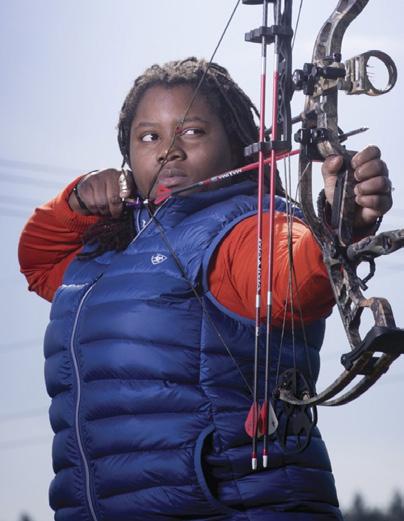
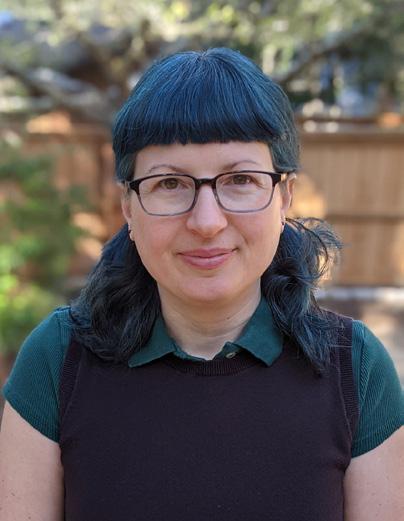
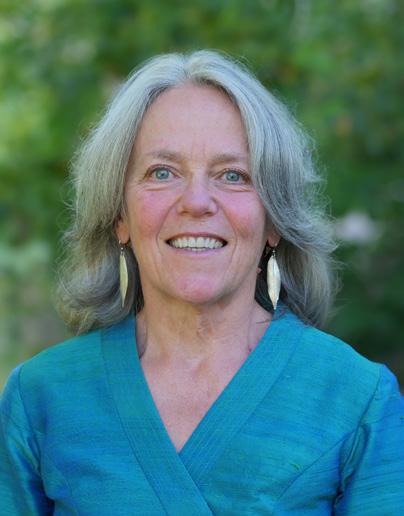

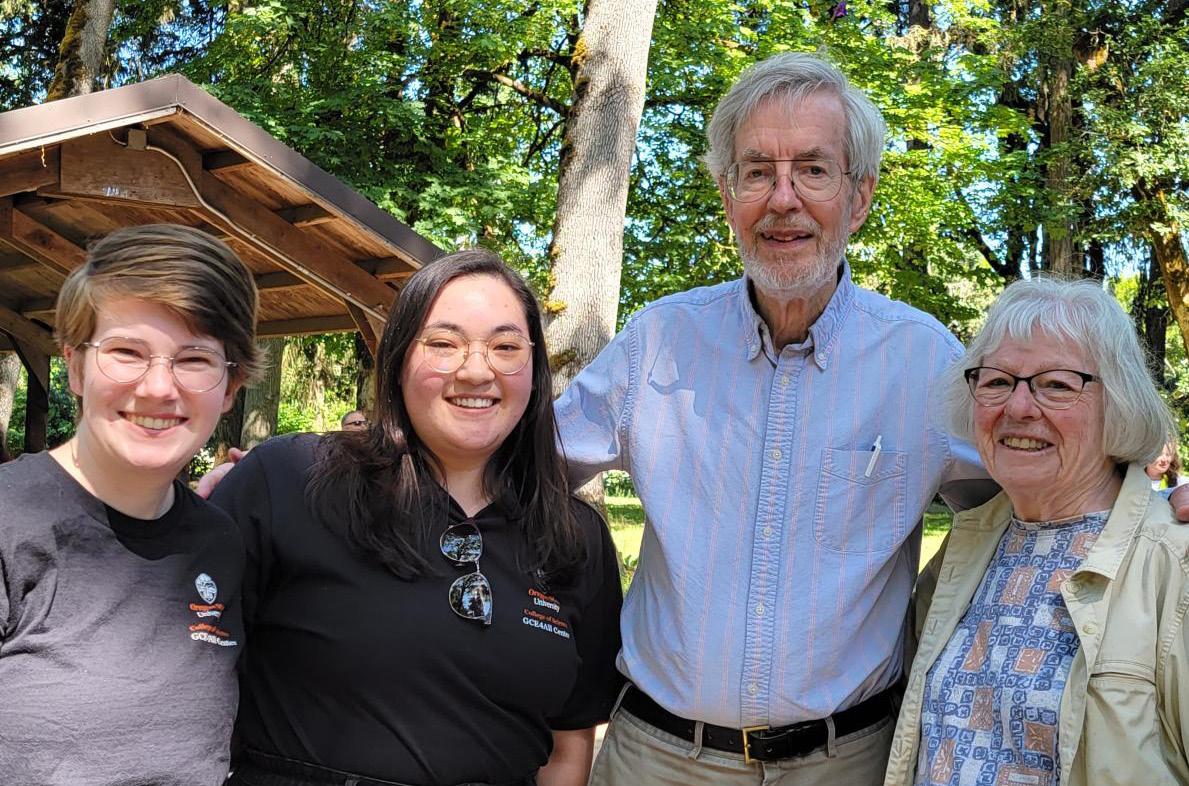
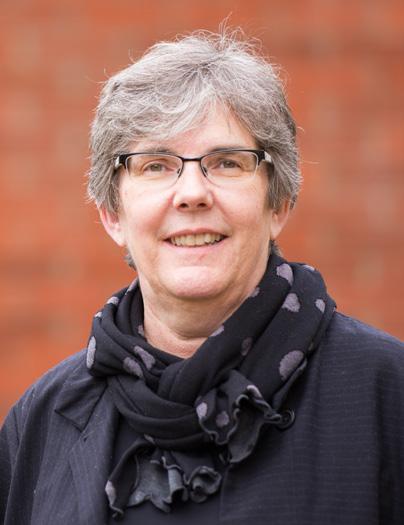
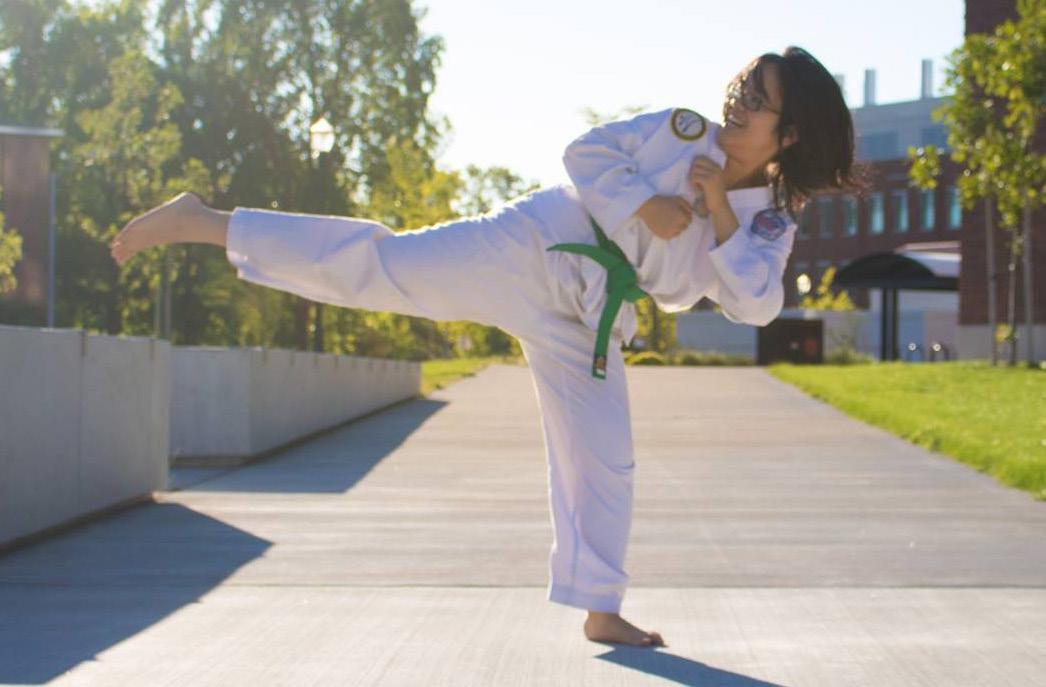
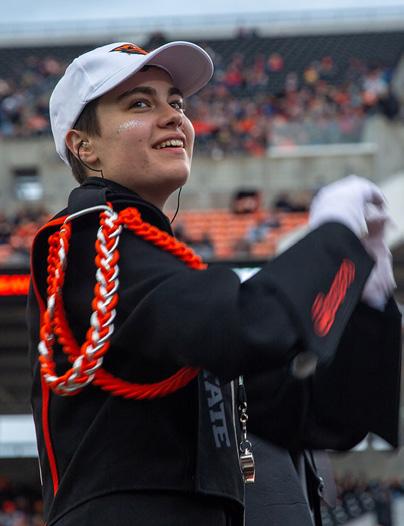
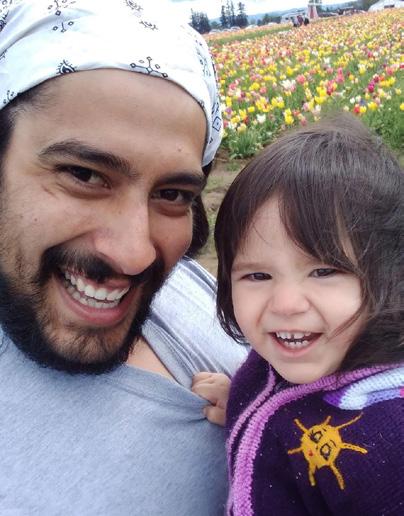
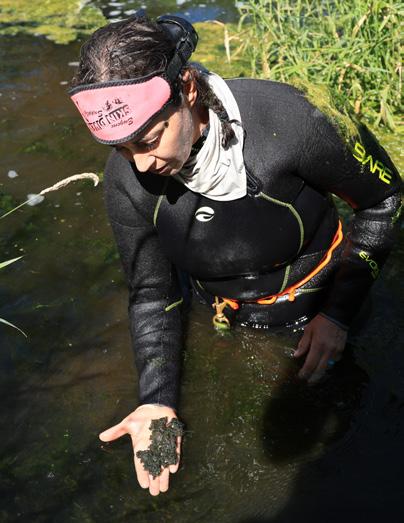
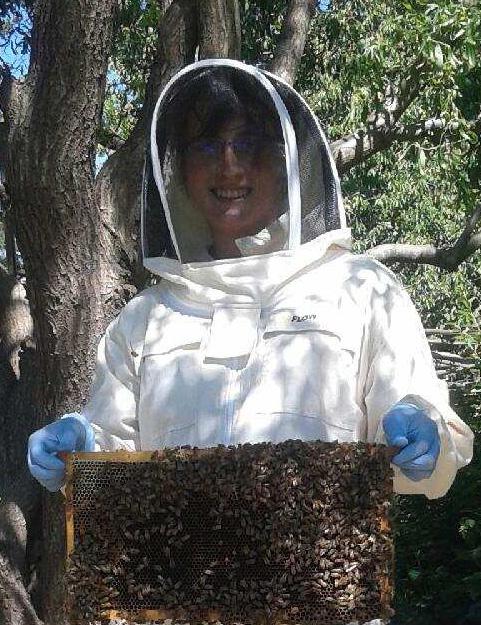
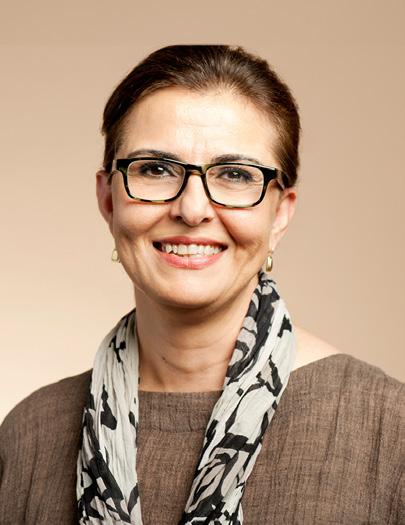
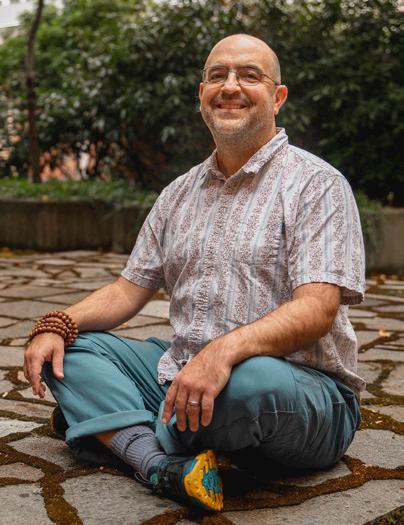
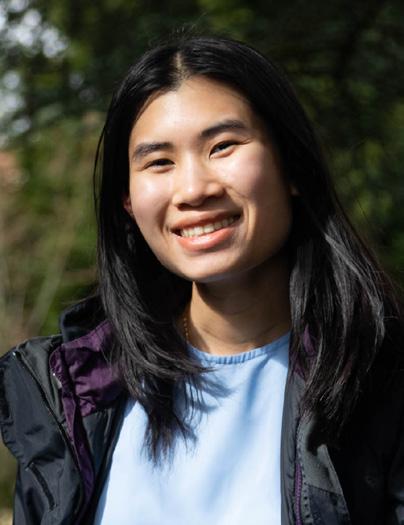
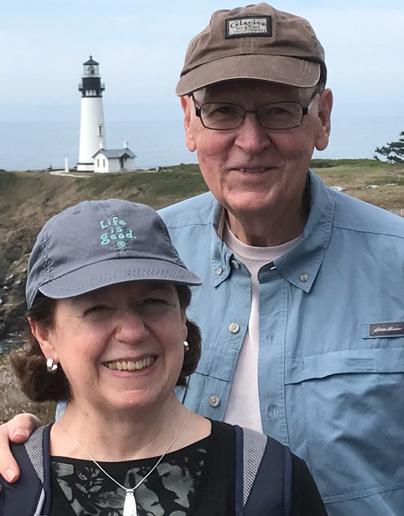
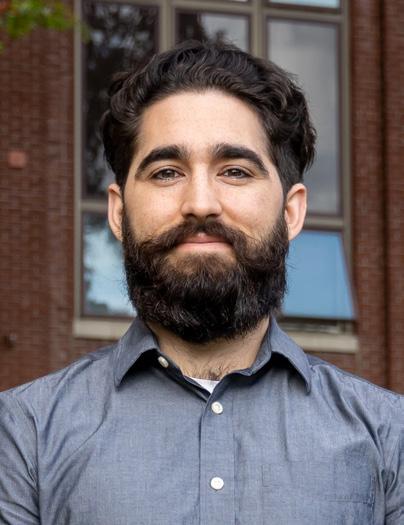
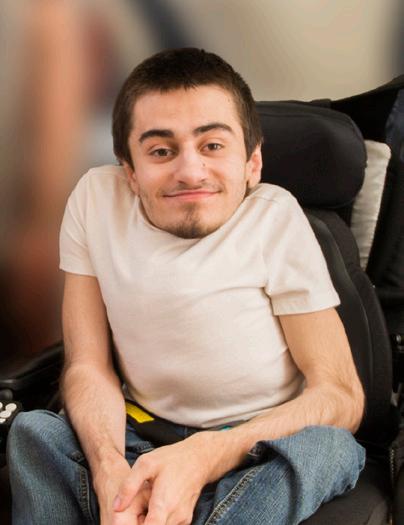
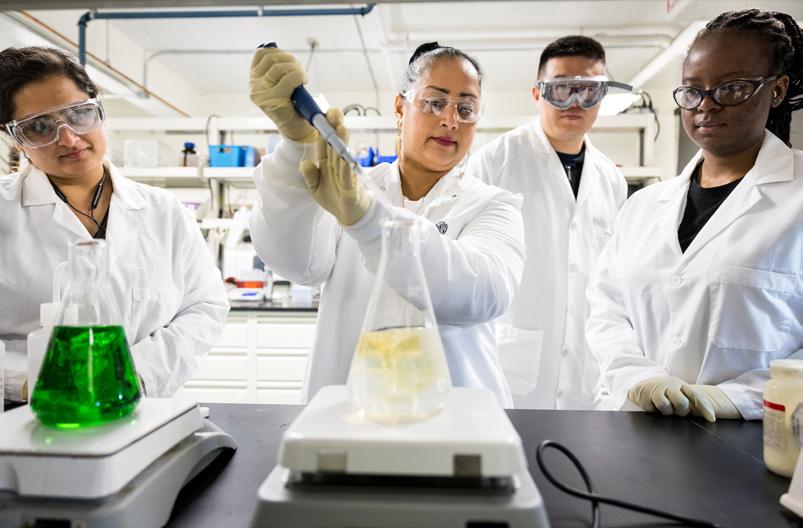
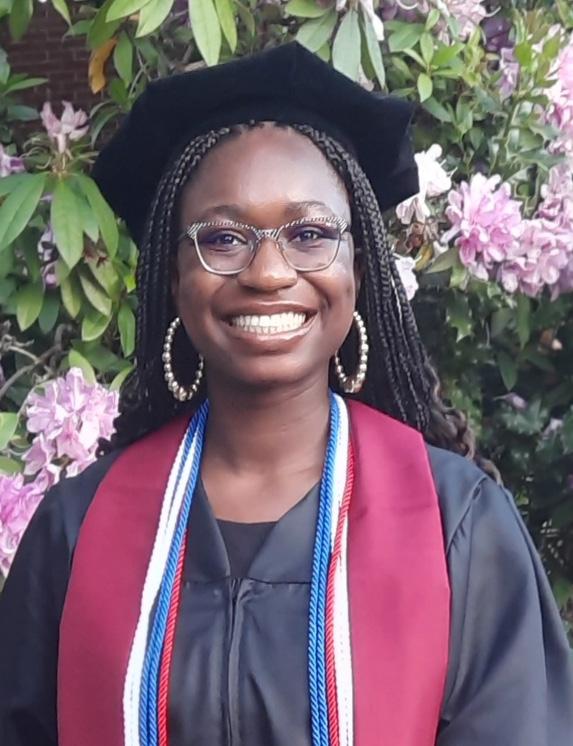
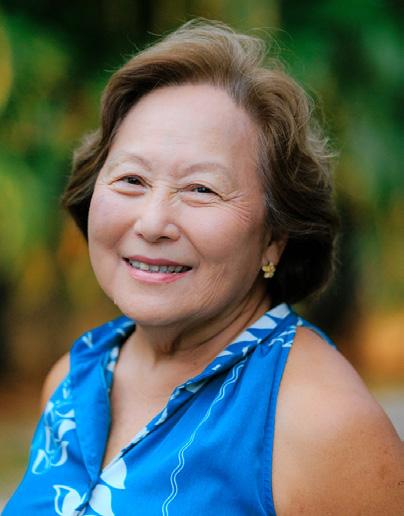
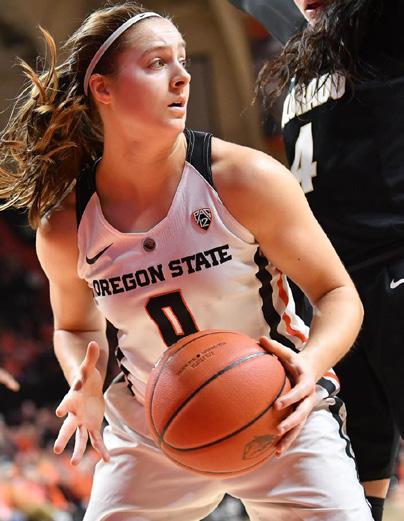
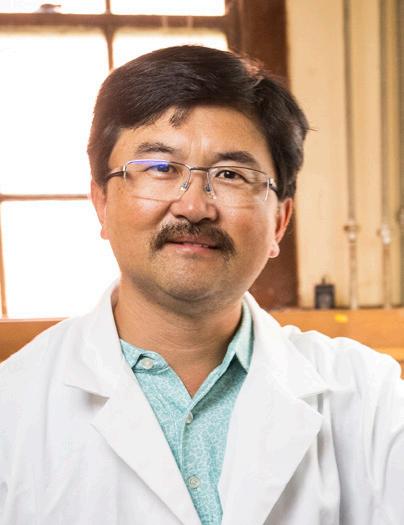
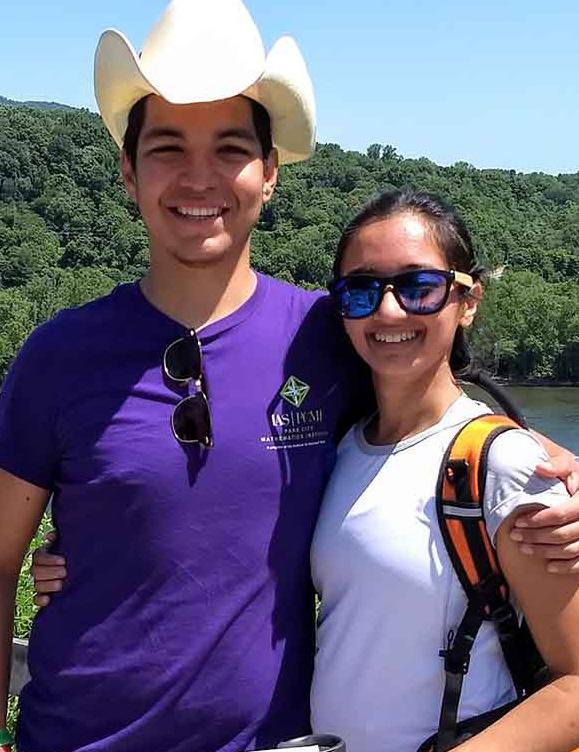
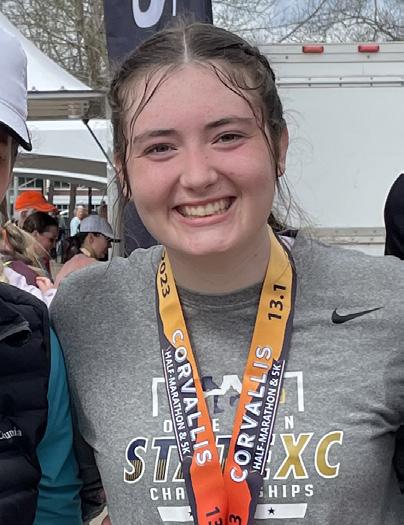
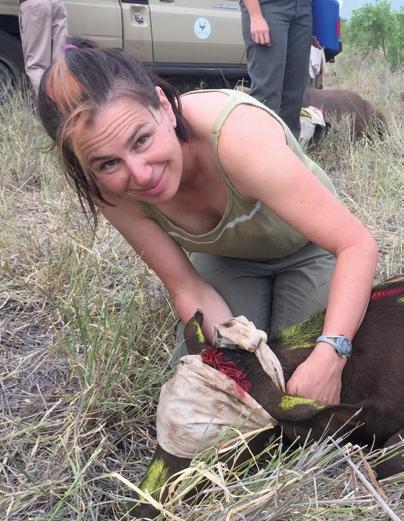
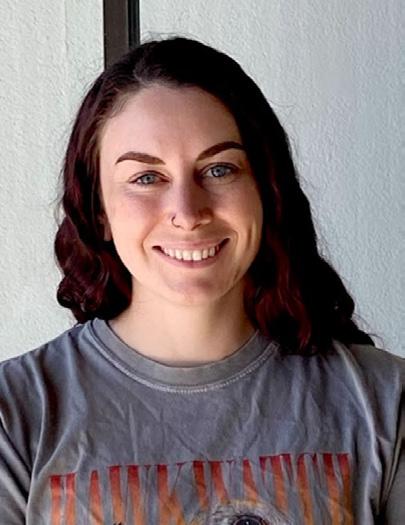
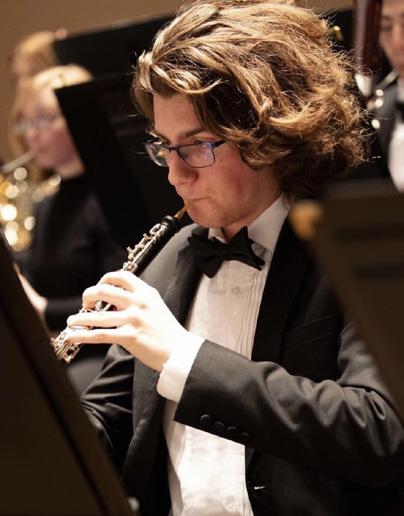
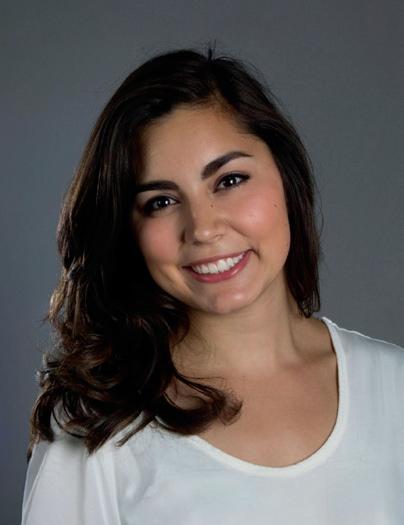
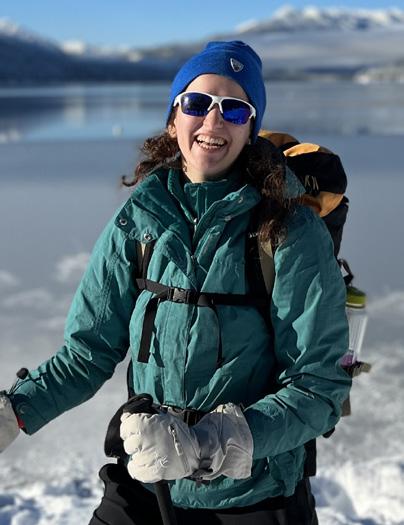
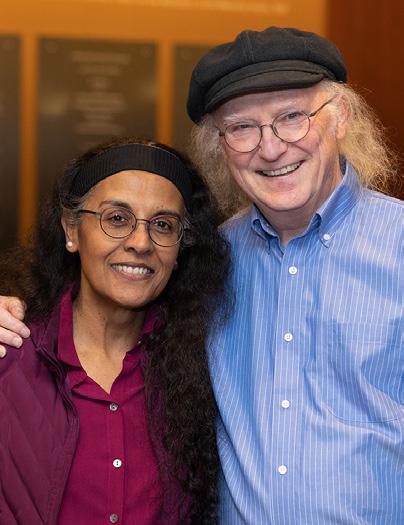
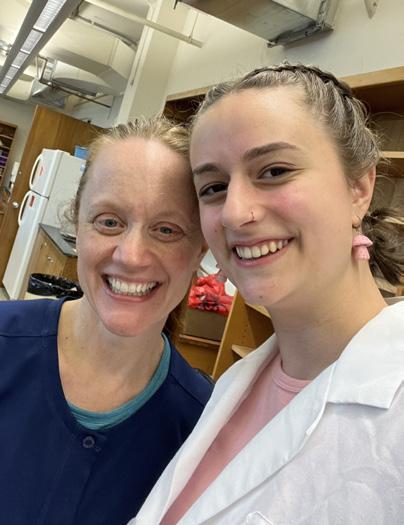
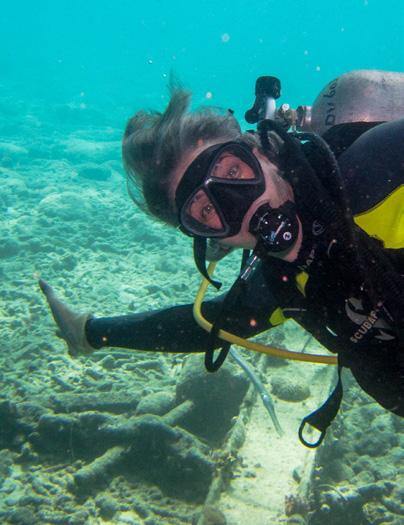
Every student deserves hands-on research opportunities. But how can that be a reality with limitations on time and available faculty?
Alysia Vrailas-Mortimer, associate professor and principal investigator with the Linus Pauling Institute, and her colleagues in the Fly-CURE consortium stumbled upon a solution they hope to expand across the United States. Fly-CURE is a research coordination network bringing together faculty across the U.S. to create CUREs, course-based undergraduate research experiences.
“This is a really great opportunity, particularly for students who are from low-income or first-generation backgrounds where they don’t necessarily have someone guiding them through the process or for students who have to choose between working a job and getting a research experience,” she said. “By embedding research in a course, we try to eliminate some of these barriers.”
And this is more than traditional coursework. Students work on a research project that no one, not even the faculty, knows the answer to. By making it a course, students get class credit and real-world hands-on, vital inquiry-based research experiences. This creates a method for one faculty member to provide authentic research experiences for many students all at once.
Vrailas-Mortimer and her colleagues recently received $500K from the NSF Division of Biological Infrastructure to continue to expand the program. Fly-CURE will act as a centralized hub for training undergraduates in four new CUREs encompassing in-demand curricular topics: Bioinformatics, Behavioral Genetics, Molecular Biology, and Developmental Biology.
Fly-CURE started over 10 years ago at the University of Detroit Mercy. Students mapped and characterized mutants isolated from a genetic screening of common fruit flies.
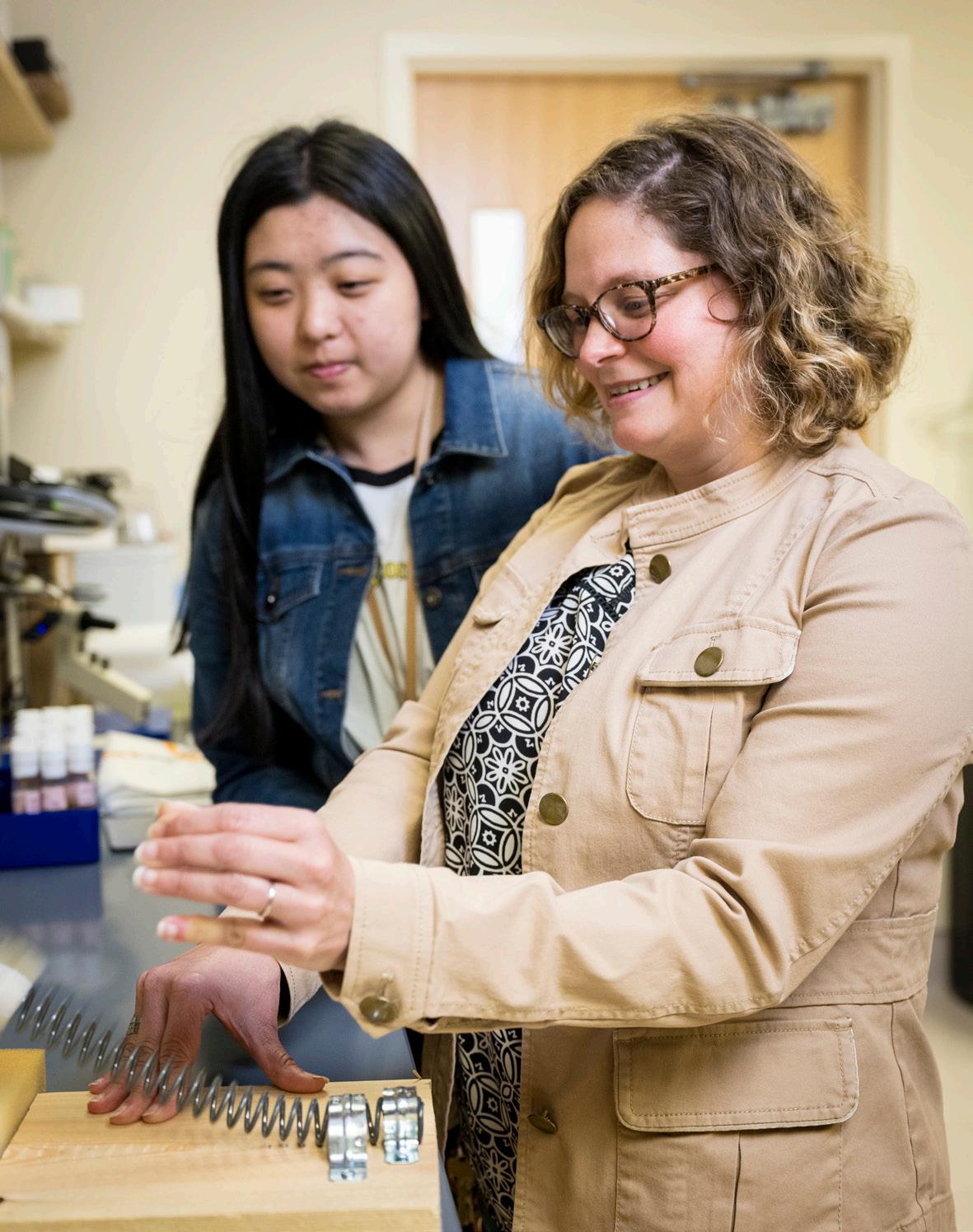
Initially, seven institutions joined the program as it expanded. Now, faculty from over 25 institutions are involved, including community colleges and minority-serving institutions. New faculty are supported with a stipend to cover the cost of implementing the course in their own class.
The program is also modular, meaning faculty can select and customize what they teach. “If somebody wants to do a portion of the behavior and a portion of the bioinformatics, they can do that in their course,” Vrailas-Mortimer said.
Last winter, she developed and implemented the genetics of behavior lab as a part of the Honors section of her Cellular and Molecular Biology course. Oregon State students worked with Drosophila melanogaster—fruit flies—to identify a mutation that causes abnormal eye development and see how the mutation affects the behavior of the flies and their recovery from traumatic brain injuries.
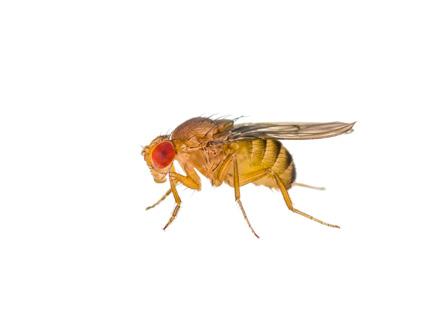
Expanding Undergrad Research
Expanding Undergrad Research
Fruit fly experience has students buzzing
International summer student Rebecca Hsu (far left) and biochemistry and molecular biology senior Francisco Hernandez (right) work with Alysia Vrailas-Mortimer (left) to learn more about traumatic brain injuries in fruit flies (far right).
12 OREGON STATE UNIVERSITY COLLEGE OF SCIENCE
Students participated in a flipped classroom format in which they watched recorded lecture videos before class. During the class, they delved into the topic with a discussion based on the latest advances.
Fruit fly eyes are composed of more than 6,400 photoreceptor neurons. Disruptions in the shape and size of the eye can be caused by the death of these neurons, resulting in an abnormal eye.
“Because most of the cells within the eye are neurons, we can use this as modeling neurodegeneration,” she said. “So we can use this feature of the fly to look at all sorts of different types of biological processes, including human diseases.”
In fact, it’s estimated that nearly 75% of disease-causing genes in humans have an equivalent in fruit flies. With the ability to breed quickly and change their DNA code, they are perfect for genetic studies looking at infection, inflammation, cancer and more.
Vrailas-Mortimer’s students made a new discovery by determining which gene mutated and how the mutation altered the DNA. In addition, they tested if the mutation affected neuronal function, climbing, and walking gait and speed. The final analysis focused on if the mutation resulted in increased susceptibility or resistance to traumatic brain injury.
At the end of the class, the students wrote up their results in a scientific paper and then presented their findings to the rest of the class. Students and instructors involved with the program had their work published in microPublications Biology, and everyone involved was listed among authors.
“This is a peer-reviewed publication. So the students are going through the whole real experience that any researcher goes through,” she said.
By participating in the Genetics of Behavior Fly-CURE, students gained skills in science communication, science
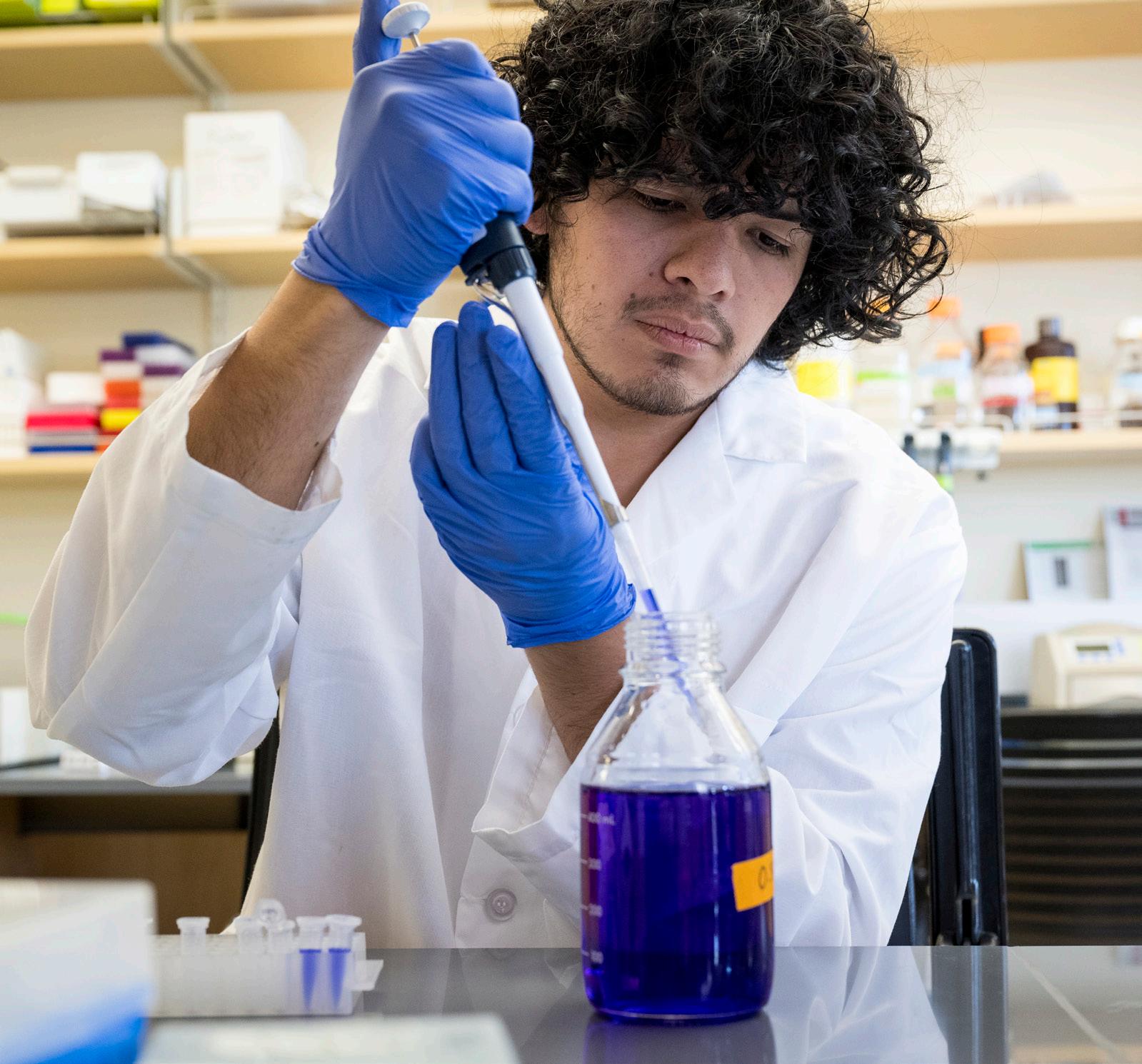
writing and critical thinking. They also had the opportunity to experience what scientific research is like in the real world.
“This is a fantastic experience that these students will be able to build upon as they move through their undergraduate education and on to graduate and professional schools and future careers,” Vrailas-Mortimer said.
Following the class, students conveyed that the Fly-CURE course increased their knowledge, sense of belonging to the science community and their interest in pursuing new research experiences.
Vrailas-Mortimer is optimistic that new course-based undergraduate research experiences will improve more students’ experiences and pave the way for students from diverse backgrounds to pursue careers in STEM.
“It’s rewarding seeing the excitement of your students fully engaged,” she said. “They really, really enjoy it.”
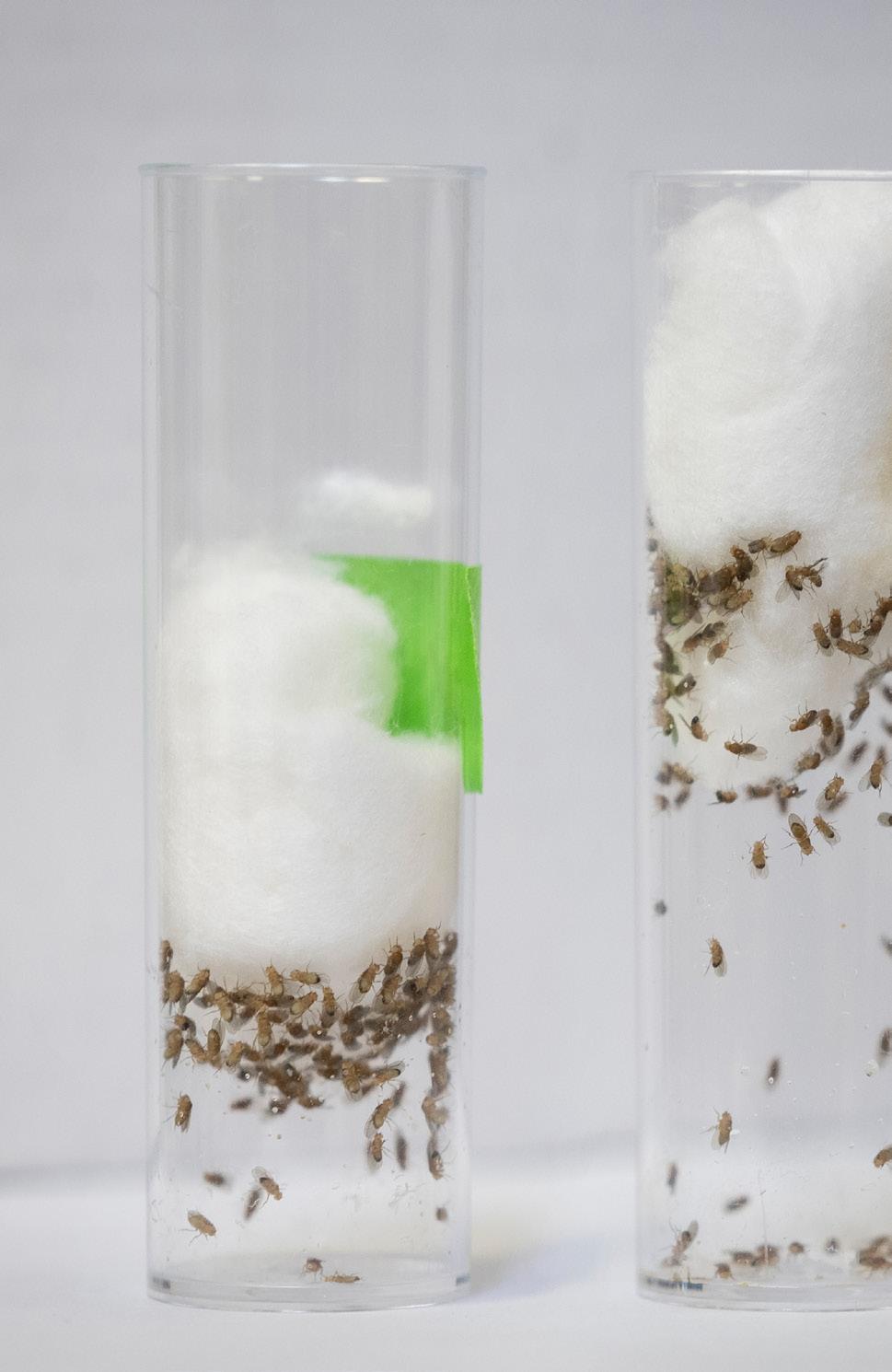
IMPACT SPECIAL EDITION 2024 13
More than a Major More than a Major Undergrads broaden
their horizons
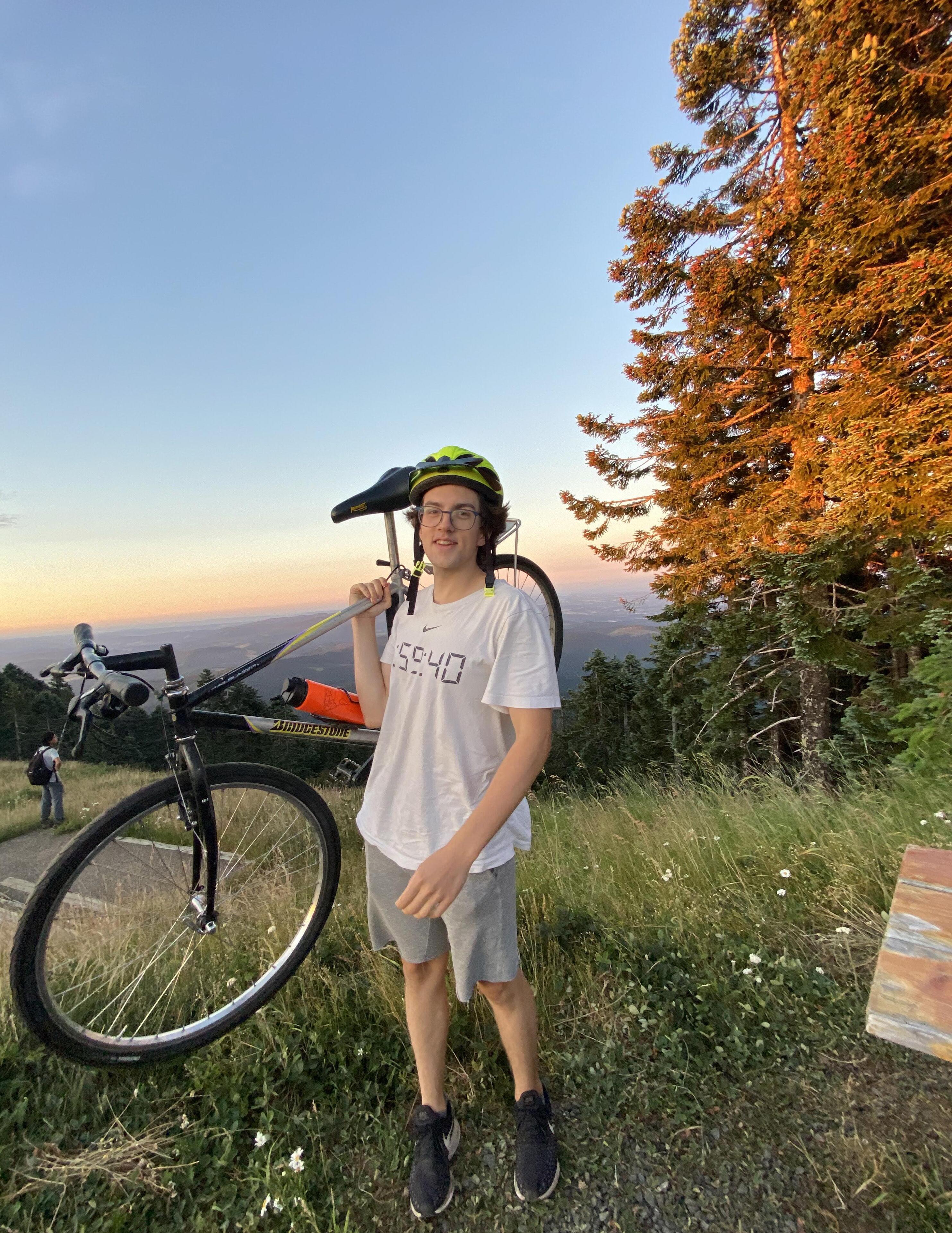
Physics grad pushes the boundaries of his field
How does DNA move? How do cells communicate with each other? When it comes to these questions, it’s easy to think of molecular biologists behind the words. But as physics and mathematics graduate Sullivan “Sully” BaileyDarland knows, there are many more voices asking these.
“My biggest worry for physics was that I would just be doing stuff about energy and electrons, and those are interesting, but they’ve been studied so much and involve a lot of the research I wasn’t as interested in,” he said. “My lab advisor has made me aware that physics is not a limiting degree. From what I can tell, it’s the most limitless degree.”
In his first year, Bailey-Darland joined URSA Engage—an OSU program pairing students and faculty—and collaborated with Associate Professor Kevin Brown on computational programming research. He discovered a passion for biophysics, welcoming its interdisciplinary approach to understanding complex biological systems.
This appreciation for multifaceted work pulled him in several directions until he eventually landed on a physicsmathematics double major as well as a minor in chemistry.
“Much of math, at least to me, can be simple and elegant in a lot of ways. There’s a lot of aspects of it that are translatable to other things,” he said of his second major.
Bailey-Darland’s senior year introduced unexpected challenges as he explored programming, addressing the issue of “sloppy models” in physics. Despite lacking prior programming experience, he managed to create new tools for his physics major thesis, earning the Physics Undergraduate Thesis award for his significant work.
Bailey-Darland plans to continue doing interdisciplinary work with a biophysics research group at Cornell University, embracing the diverse opportunities for growth that characterized his undergraduate experience.
14 OREGON STATE UNIVERSITY COLLEGE OF SCIENCE
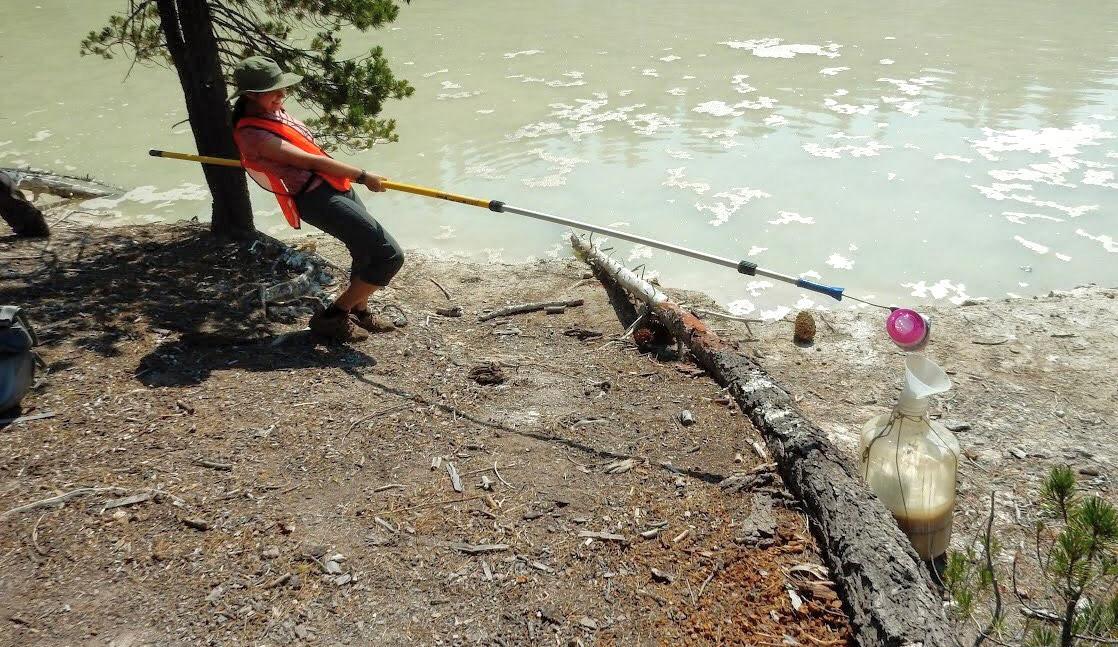
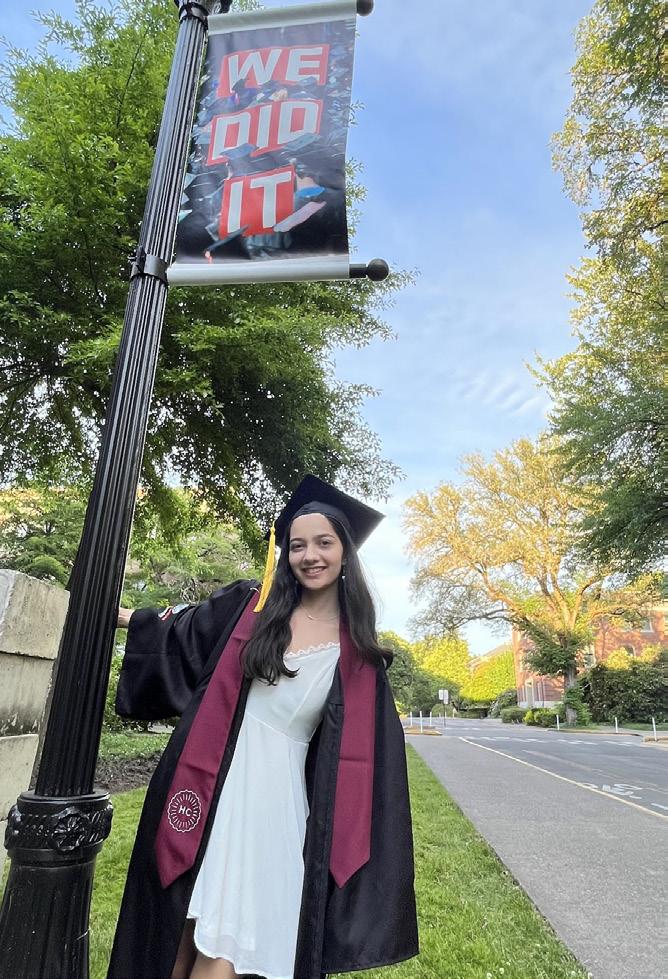
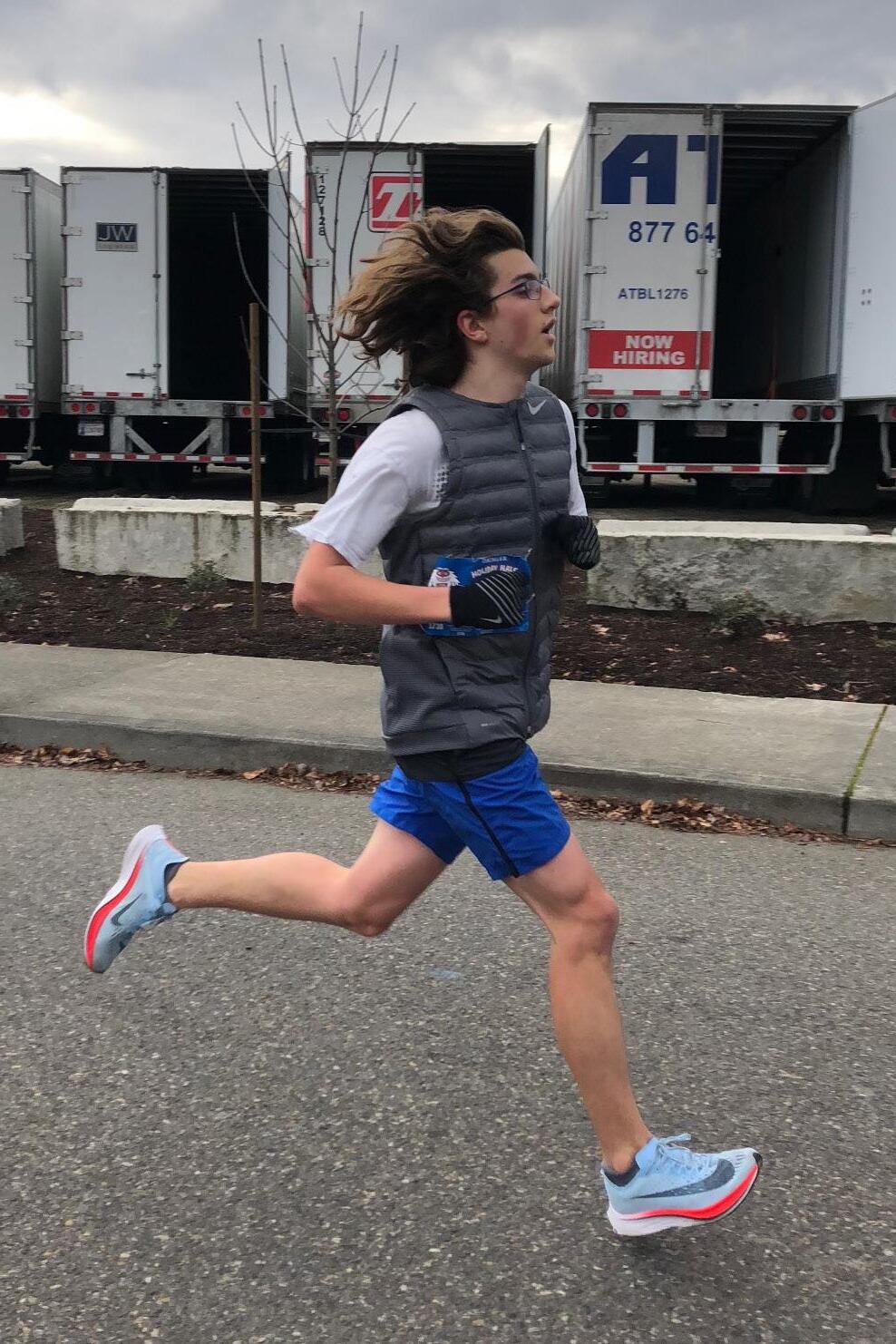
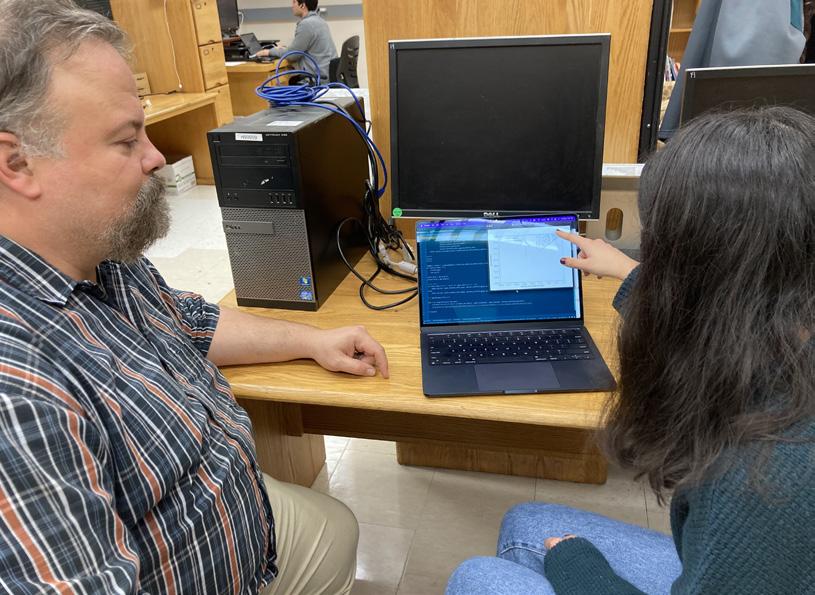
(Above) Alyssa Pratt’s summer internship catching specimens with the Extreme Virus Lab at PSU solidified her love of science, which only continued under Professor Hendrix’s mentorship at Oregon State.
(Below) Sullivan Bailey-Darland has found a full range of research opportunities from his time pursuing physics, mathematics and even chemistry at Oregon State—while still making time for his non-academic pursuits, like biking, running and playing oboe.
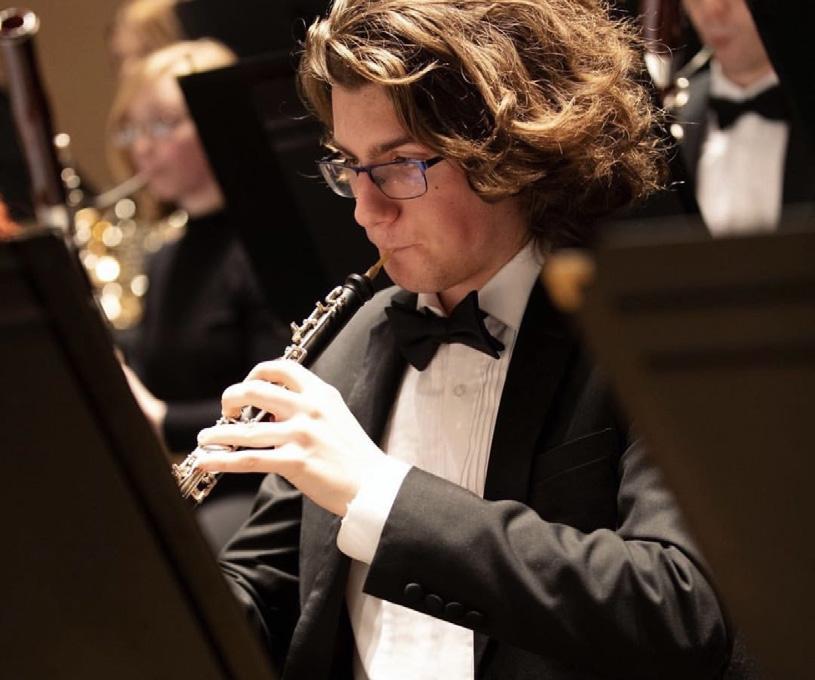
Biochemistry and computer science senior pursues Ph.D. Alyssa Pratt , a Goldwater Scholar and recent grad, chose a dual major in computer science and biochemistry and molecular biology. Her journey began with a fascination for the stars, evolving into a passion for biology during middle school. Pratt’s pivotal moment occurred during a summer internship at Portland State University, where she researched cruciviruses using environmental DNA. This experience solidified her commitment to science, and mentors from the lab played a crucial role in shaping her decision to pursue a Ph.D.
While biology was a straightforward path, Pratt’s interest in computer science was much rockier as she didn’t feel welcomed in the field throughout middle and high school.
During an outreach opportunity in high school, she realized that she still loved the field as she helped expose other young girls to computer science and electronics. “That gave me the confidence to pursue computer science, and I knew that it was something that I could do,” she said.
In college Pratt excelled in computational biology, particularly enjoying courses on algorithms and computational molecular biology. Community and mentorship played a vital role in her success, with Lauren Dalton and Dave Hendrix standing out among her professors.
Hendrix, her mentor, guided Pratt through remote work during the pandemic, focusing on coding, computational experiments, and research development. Pratt’s participation in the URSA engage program allowed her to present her research and attend the 2023 American Society for Biochemistry and Molecular Biology conference.
Pratt aims to help make science more collaborative, bridging the gap between experimental and computational scientists. She also advocates for improving K-12 science education and has been actively involved in outreach programs like the Science & Math Investigative Learning Experiences (SMILE) program.
IMPACT SPECIAL EDITION 2024 15
Pratt plans to apply to Ph.D. programs in computational biology, aspiring to create a more inclusive world where aspiring scientists, like her younger self who loved the stars, feel empowered.
French, microbes and the microbiology senior who speaks both Lice: creepy, crawly, but to a young Amelia Noall, fascinating.
Memories of getting lice in elementary school aren’t usually fond ones, but after she was gifted a microscope by her mother, the experience became an early sign of Noall’s eventual major.
“There was an outbreak at my school, and of course I got it. But I started looking at the bugs through my microscope and thinking, ‘Wow, these are so interesting!’” she recalled.
Leaving Portland, Oregon to start her first year of college, she decided to major in biohealth sciences, set on pursuing forensic anthropology. But she later felt drawn to naturopathic medicine, and after that, realized she didn’t have a particular goal in mind.
“Being here exposed me to a lot more than I had ever really seen,” Noall said. “I wasn’t sure what I wanted to do, but I wanted to keep exploring.”
She began diving head first into science at Oregon State, fitting as many clubs and classes as she could into her schedule, and eventually stumbled upon the microbiology major. Just as the shapes and forms of small organisms had captivated her as a child, microbiology caught her attention for a similar reason.
“I actually chose microbiology because I think that microbes are cute,” Noall said. This unassuming interest appealed to her enough that she decided to commit. With a final switch of her major to microbiology, she soon found herself appreciating microbes for much more than how they looked.
“I previously thought before that bacteria were just something you kill with antibiotics, but they help us a
lot more than they hurt us,” she said. “Bacteria live on us, in us. We’re about as much microbe as we are human.”
As time has gone on, Noall has developed more passions outside of microbiology. She has often felt pulled in many directions, which was amplified by the vast spread of opportunities available on a campus as large as OSU.
Beyond the facts and figures of science, Noall carved out a slice of her time to dedicate wholeheartedly to studying French. The language had long been a cherished hobby of hers, but she never intended to continue learning it in college.
From dedicating herself to her French minor and becoming president of the French Club to talking with hundreds of coming-and-going students while working at the Valley Library, she grew connections all over campus. Still eager for more, Noall later chose to spend her senior year studying abroad in Ireland.
Noall is now part of the Teaching Assistant Program in France, having been accepted to help instruct English classes while abroad. Although she isn’t sure if she will continue down the teaching route or follow a different passion for her career, she is excited for whatever road lies ahead.
Revolutionizing mathematics education
Madison Collins , a student in mathematics with a focus on mathematical biology and a minor in chemistry, is deeply committed to transforming math education. Her journey began in childhood when disagreements with her parents over math methods ignited her interest in alternative teaching approaches. Collins plans to continue her education with a master’s degree in math education at Oregon State, driven by the goal of making the subject more accessible and enjoyable for students.
Even though 1+2 will always be equal to 3, Collins strives to teach math differently so that students can learn better and discover something new along the way.
“I want to help students from multiple backgrounds see that learning math and succeeding in a college math course is possible for them. I want to be able to communicate math well to students so they can learn the content and gain confidence in their mathematical abilities,” she said. “In college, a lot more students don’t feel like they can connect to the teachers personally, so I definitely want to try to build up the community in that way while teaching.”
Having excelled in math from an early age, Collins surpassed her father’s understanding of the subject, fueling her passion to help diverse students succeed in math. Her Honors thesis focused on analyzing and enhancing the collegelevel calculus curriculum through innovative teaching methods.
In addition to her academic pursuits, Collins was a former student-athlete, participating in cross country, swimming and track in high school. Balancing a busy schedule, she worked as a tutor and later joined the Supplemental Instruction program to help other students flourish in their classes. In these roles, Collins introduced creative teaching methods, such as a BINGO activity, to foster collaborative learning.
At the end of her third year, Collins devoted the majority of her time to developing her Honors thesis with Mathematics Instructor Elizabeth Jones. She sat with the students and jotted down different teaching strategies implemented by a variety of instructors. Using her observations, she developed a framework for analysis in order to find the most effective ways to continue integrating the calculus curriculum in college-level courses.
Like her mentor Professor Nathan Gibson, Collins aspires to create an approachable and engaging college mathematics environment, challenging the stereotype that some individuals are not “math people.” Her journey from early math discussions to completing her Honors thesis underscores her unwavering commitment to reshaping mathematics education.
16 OREGON STATE UNIVERSITY COLLEGE OF SCIENCE
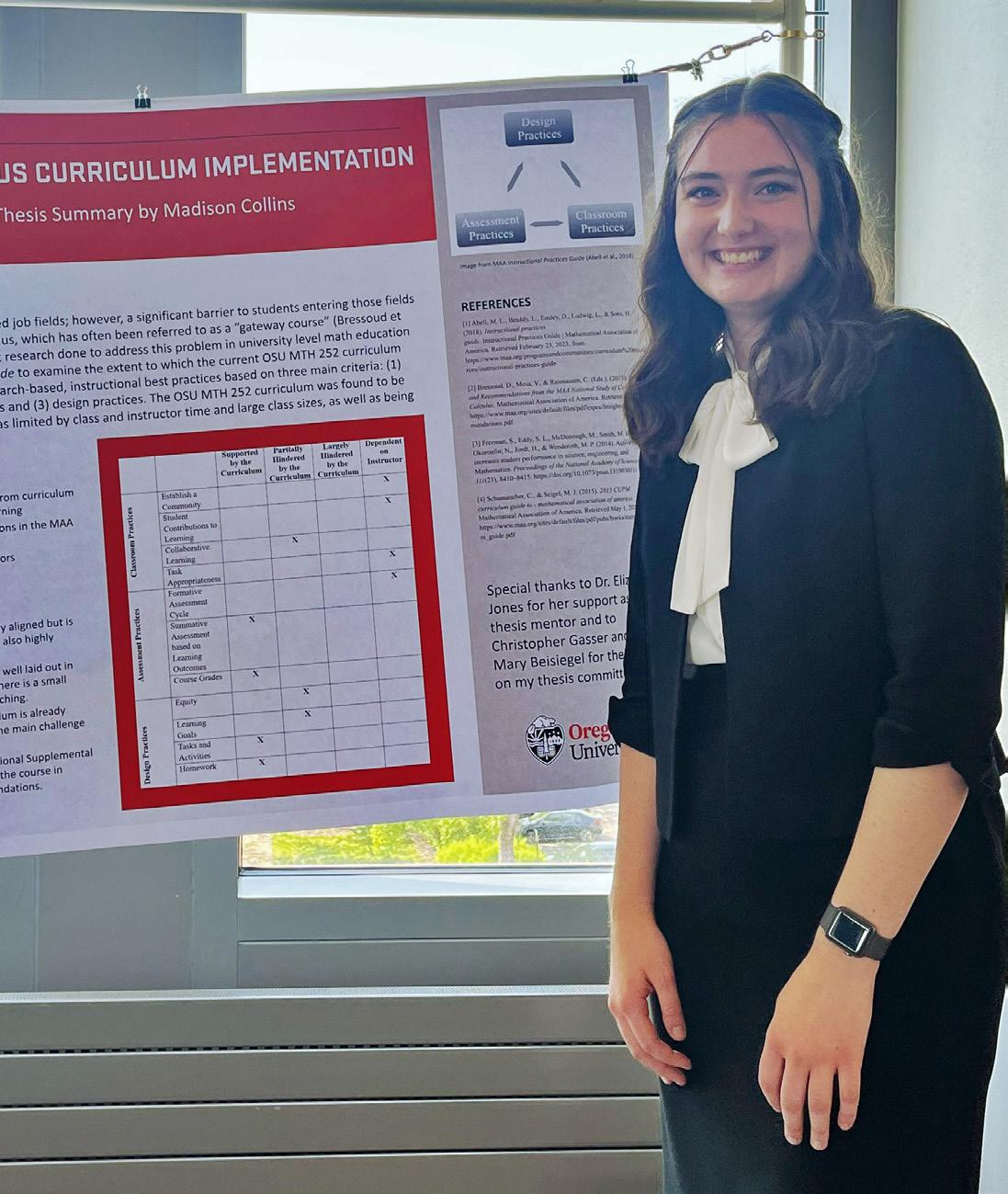
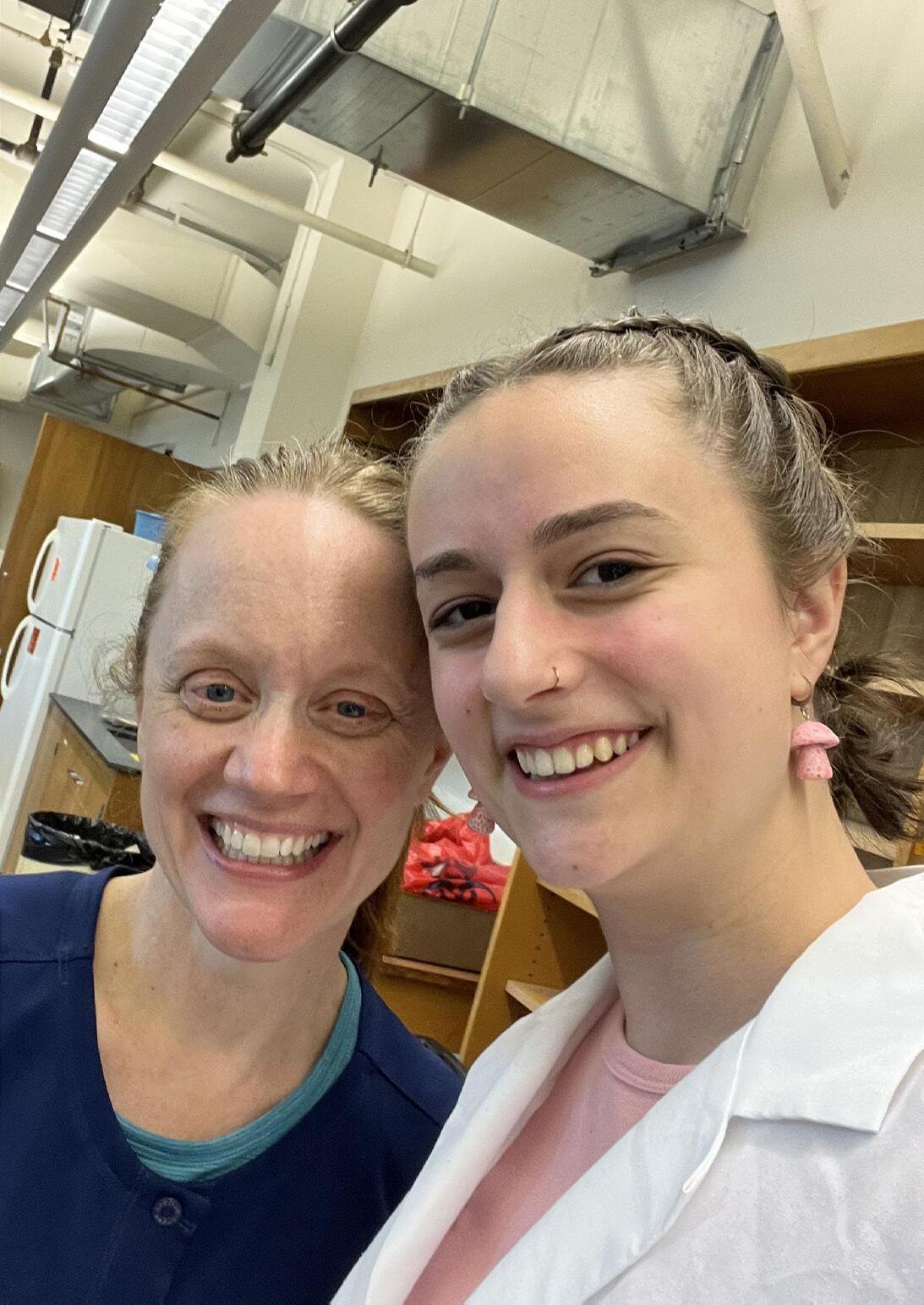
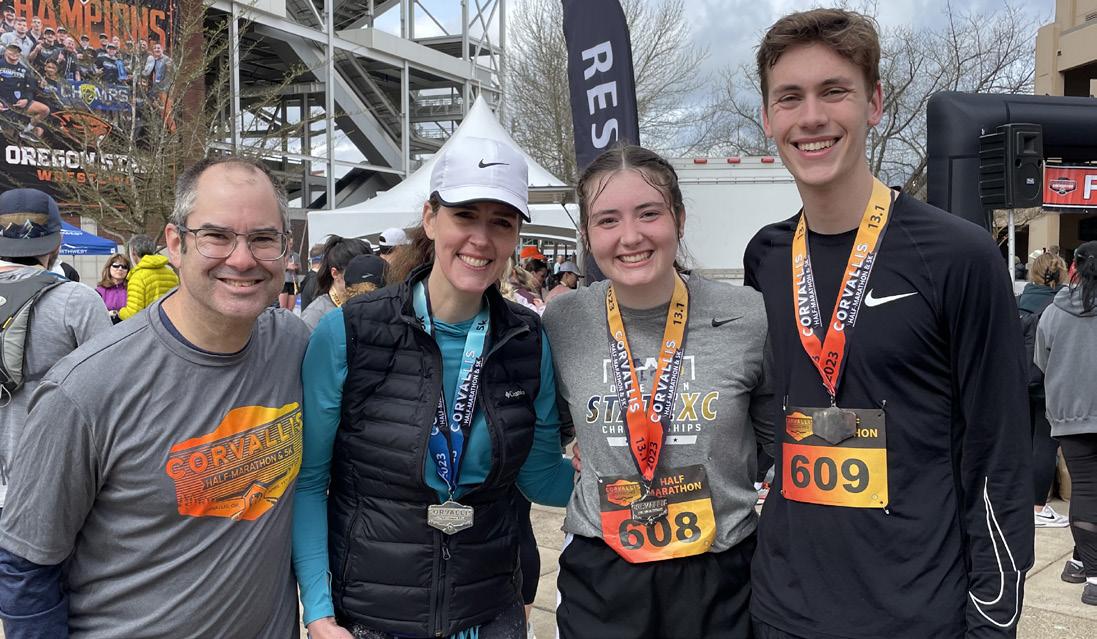
In addition to her research pursuits (left), Madison Collins is an avid runner (#608, above). Training for the 13.1 mile run, spending time with her family and developing a thesis in the same term required a work-hard-play-hard attitude.
French language enthusiast Amelia Noall complemented her love of microbiology with her appreciation for travel and culture. Below left, she is shown beside her advisor Allison Evans at Oregon State. Below right, Amelia travels abroad to Torc Mountain in Killarney National Park, Ireland and Les Jardins du Palais Royal in Paris during a trip in 2019.
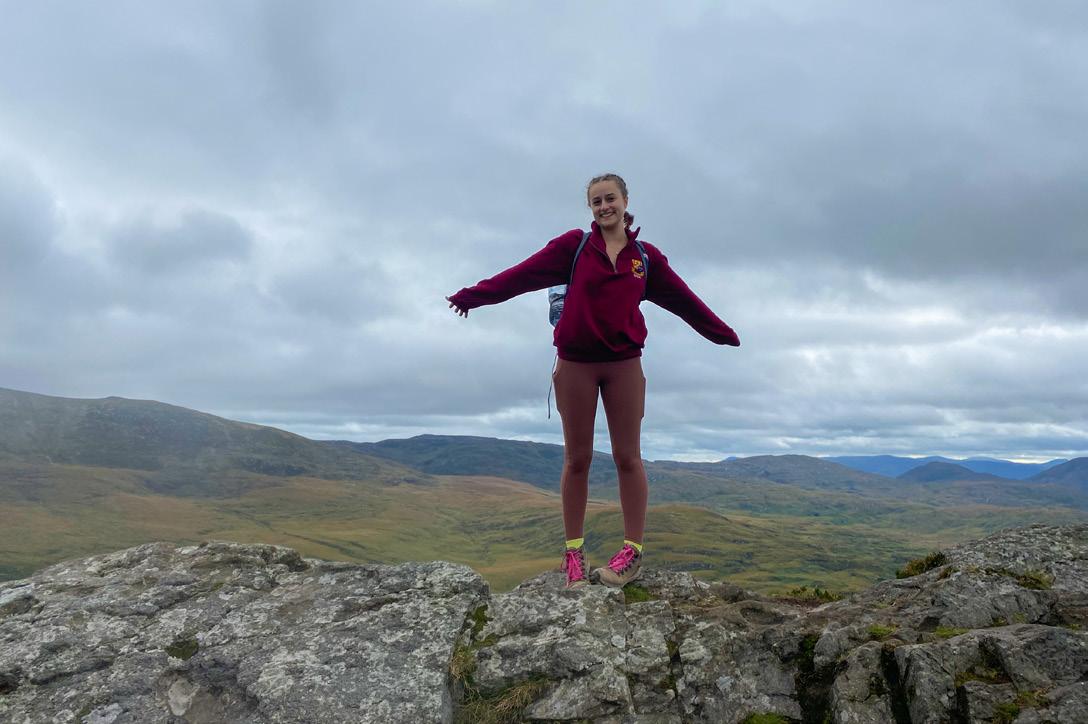
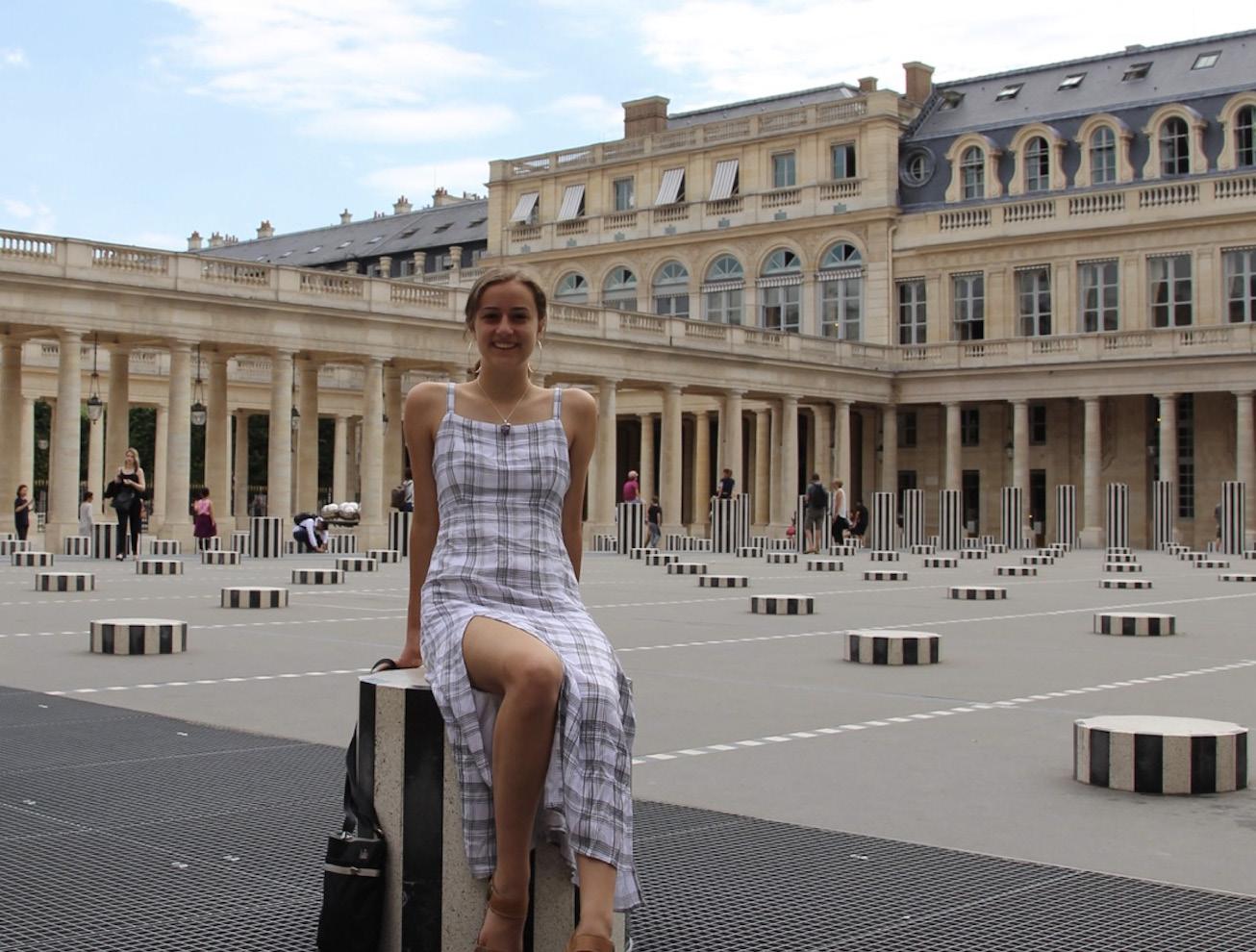
IMPACT SPECIAL EDITION 2024 17
Biology senior chases a bug-filled adventure
Biology senior Catherine Raffin once shared the common fear of spiders, but took a bold step to overcome it by purchasing a pet tarantula. This created a childhood fascination with insects that later transformed into a deep passion for entomology.
“Lo and behold, I got to college and discovered that entomology is a huge thing and that there are tons of other people out there studying bugs,” she said. “It felt like a new home.”
In her junior year, Raffin joined an entomology lab that collaborates with the USDA Agricultural Research Service to develop alternatives to chemical pesticides. Her focus went to studying western flower thrips, pervasive pests in gardens and flowers. Raffin’s research involved investigating neuropeptides in the thrips’ bodies to create innovative pest management tools.
Working in a lab became a way for her to bring the concepts of science she’d learned in class to life. “It’s very fun to enact a real-world experiment the way we always talk about in classes,” she said. “It can be a struggle sometimes, but it feels good to know that you’re contributing to the greater world of science.”
Beyond her lab work, Raffin actively engaged in LGBTQ+ and trans-centered communities on campus. The Women’s Center, a cultural center on campus, hosted several conversation circles that helped her connect with other people, particularly other trans women.
Raffin also contributed to a trans sex education event that addressed traditionally overlooked topics. “That was one of the events I was the proudest of participating in and supporting because I feel like our community needs more support to get trans people to feel comfortable participating in community events,” Raffin said.
As a lab-experienced, outdoorsy scientist, she continues to be driven by her curiosity and eagerness to learn more. “Biology feels like the field where everything matters and so much is still unknown.”
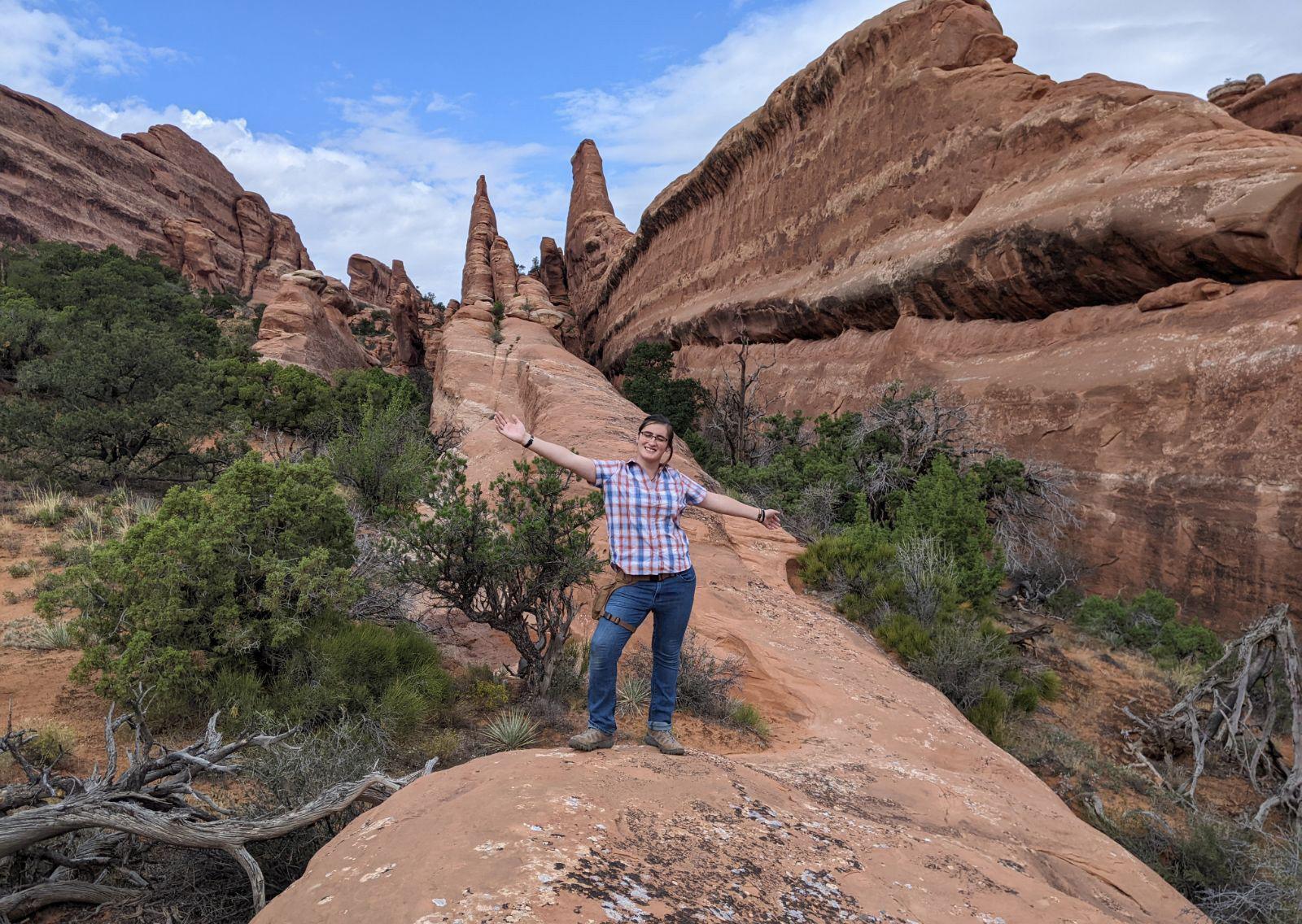
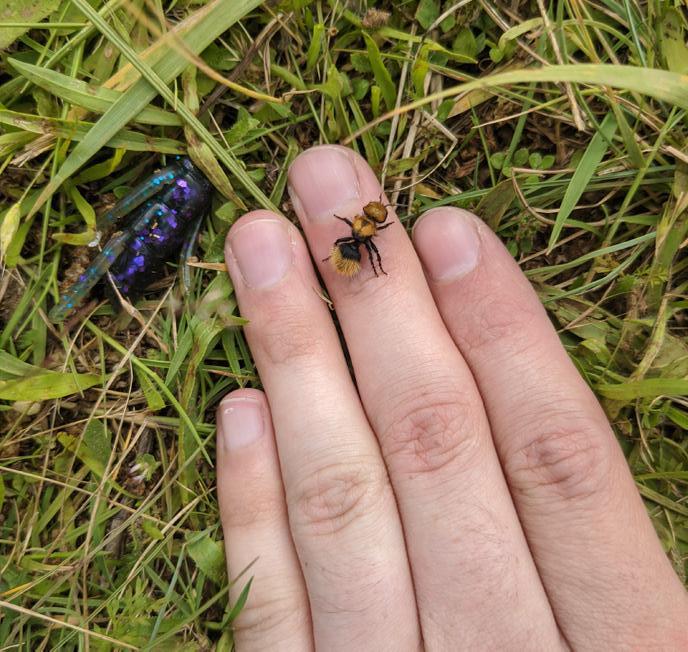
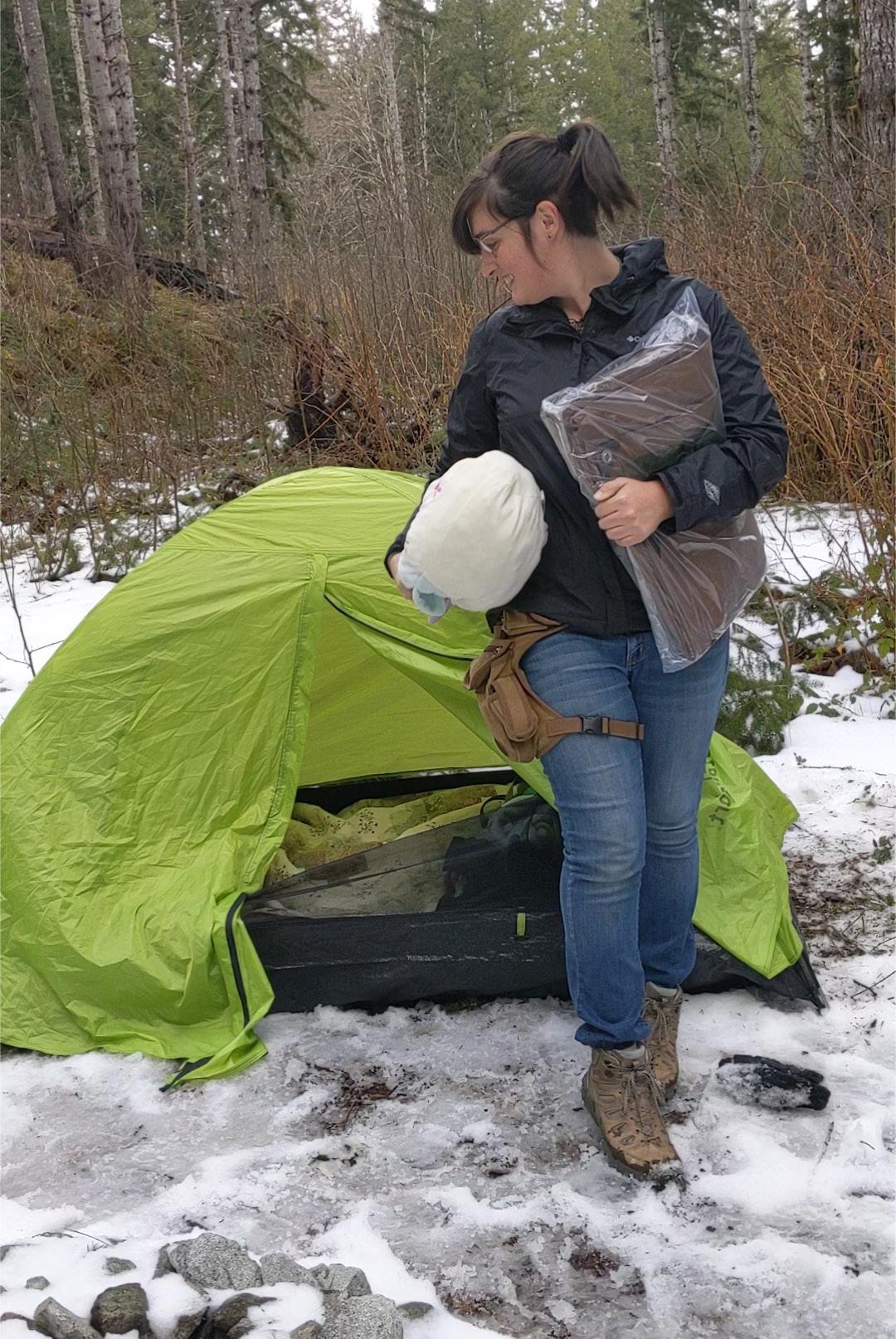
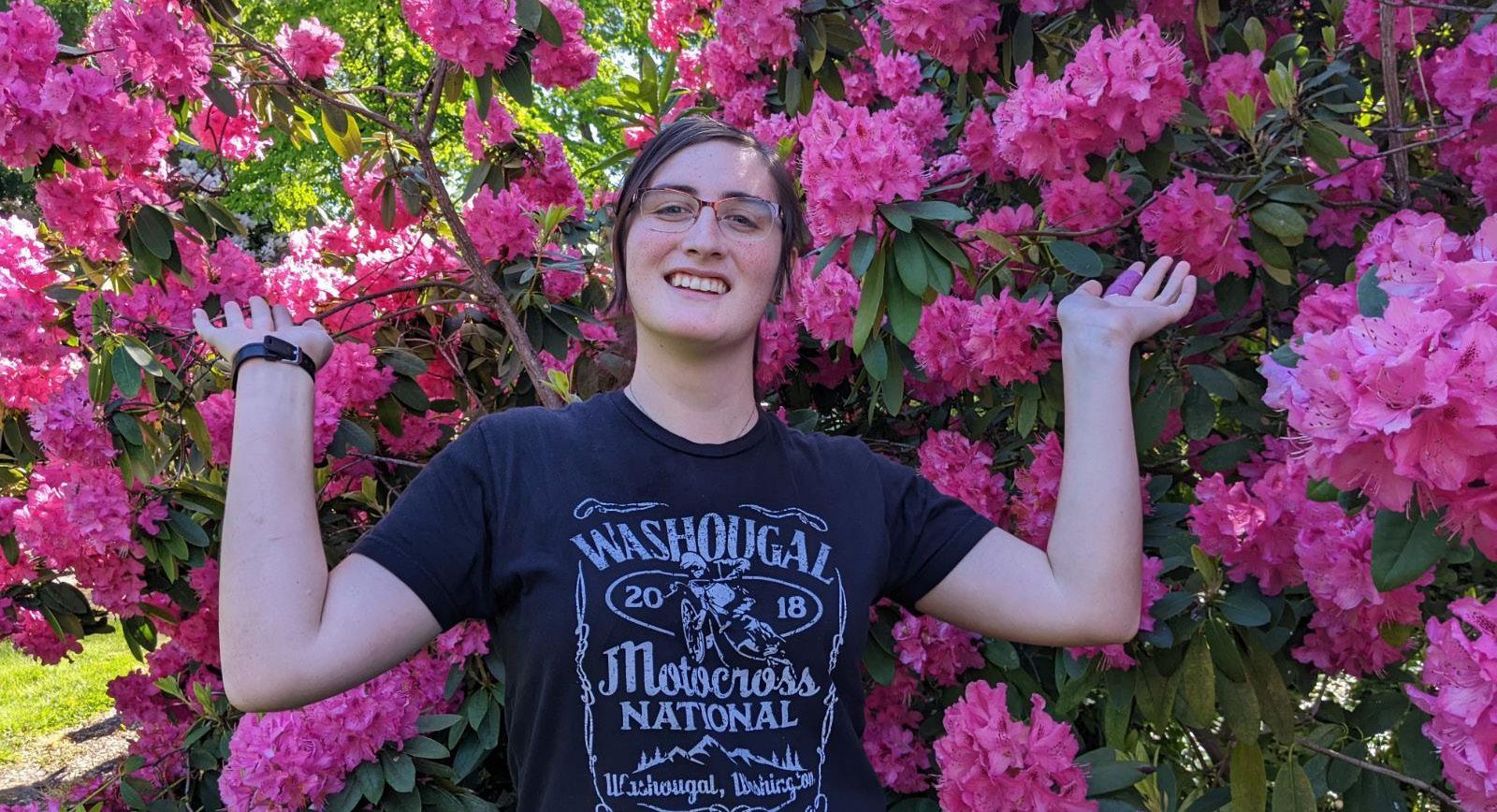 Catherine Raffin’s love of insects and the outdoors has taken her from exploring fields in Corvallis, where she discovered this velvet ant (left), to camping in Siuslaw National Forest (top and right), to a stream survey technician career after graduation.
Catherine Raffin’s love of insects and the outdoors has taken her from exploring fields in Corvallis, where she discovered this velvet ant (left), to camping in Siuslaw National Forest (top and right), to a stream survey technician career after graduation.
18 OREGON STATE UNIVERSITY COLLEGE OF SCIENCE
Summer of Science Paid research sparks students' passions
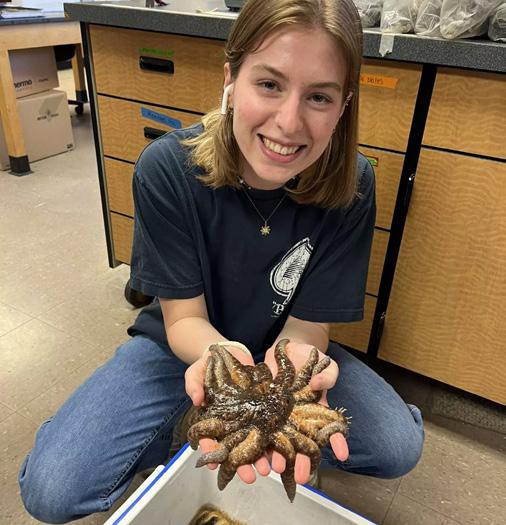
CarolineRice KaviVaidya
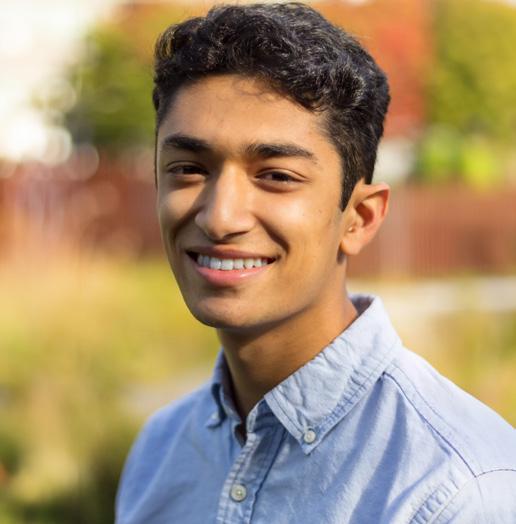
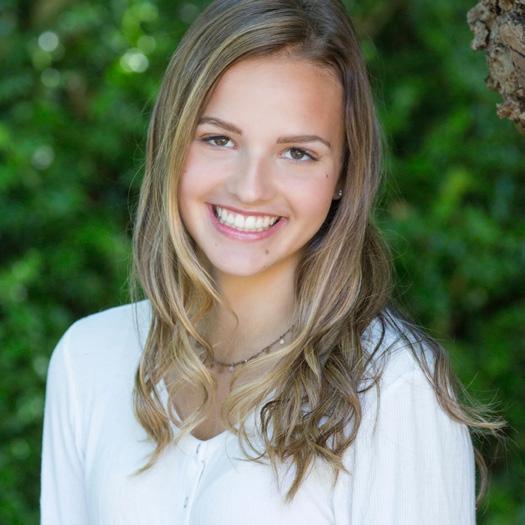
SpencerLoring
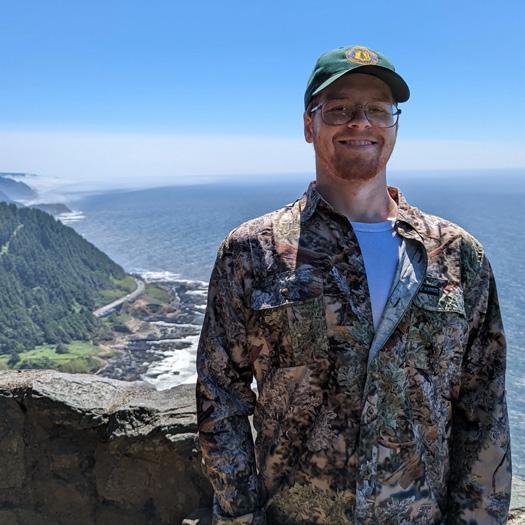
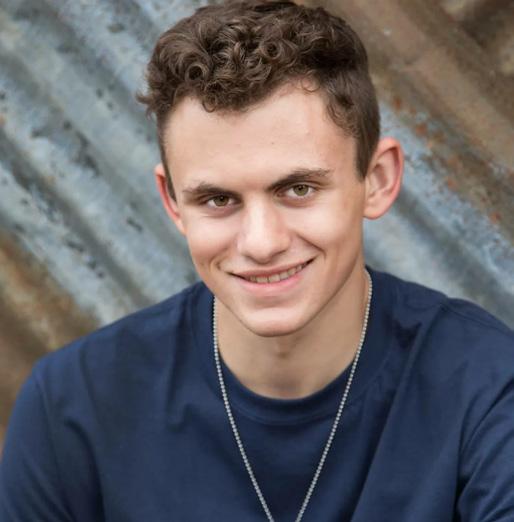
Each summer, dozens of College of Science students spend 11 weeks with faculty mentors designing their own experiments, using lab equipment, getting out in the field and drafting published papers. In short, they get to be full-time research scientists.
It’s thanks to the Summer Undergraduate Research Experience, or SURE Science program, which provides paid, full-time research experiences to College of Science students.
Strong research opportunities set Oregon State apart. Nearly half of OSU science majors work in research labs across campus. SURE Science offers undergraduates the chance to earn money while gaining real experience.
“This scholarship is an opportunity for me to pursue what I am passionate about,” said Caroline Rice (Biology), who focused on means of reducing sea urchin populations to help restore kelp
forests. “Ocean conservation has always been something that I am passionate about, so having the opportunity to gain hands-on experience related to a conservation project and to work with the researchers leading the effort has been inspiring.”
Kavi Vaidya (Honors Biochemistry and Molecular Biology) researched new technology to help automate mammal cell preparation. “The technology I am getting the opportunity to work with has the chance to change the way we study cell-type specific diseases, such as neurodegenerative diseases, and I am excited to be a part of its development.”
Becca Bingham (Honors Biochemistry and Molecular Biology) explored a potential new therapeutic target for glioblastoma, the most common and deadly type of brain cancer. “Getting the opportunity to do research that has never been done before and helps to contribute to the search for better
Gain skills. Get paid.
Want a research resumé that really stands out?
treatments is a very exciting and inspiring experience,” she said. Becca transferred to OSU specifically for its undergrad research opportunities.
Spencer Loring (Biology) appreciated the doors that his SURE Science research could open for his career and for the science community: “I’m just really excited to have the opportunity to perform my own research project that I will eventually present on and may even get significant results that can be used by fellow scientists in the future.”
Earning money for impactful research makes SURE Science a major draw. But most importantly, the program enables students to work, think and act as scientists—preparing them for competitive job markets after graduation. “This scholarship means that I will be able to graduate debt free, work in a place I love and gain experience in my field,” said Timothy Walz (Chemistry).
Launch your undergraduate research experiences with LURE Science and get 10 hours per week of paid research and professional development opportunities during the school year or spend your summer with SURE Science for 11 weeks of paid, full-time research involving faculty projects with real-world impact.
Becca Bingham
TimothyWalz
IMPACT SPECIAL EDITION 2024 19
“I chose OSU because I wanted a place where I would be able to explore my interests and find a supportive community. I also loved the campus and felt that it was such a welcoming environment filled with wonderful people.” —Samuel, Biochemistry and Molecular Biology
“I chose Oregon State because the academic environment is wonderful. I feel as if I am constantly learning and being pushed in my academic abilities. Oregon State has so much to offer for every type of student, and I appreciated how supportive the college feels.”
—Reagan, Mathematics
“I like the atmosphere here at Corvallis! I like how small the town is but how big Oregon State feels in Corvallis!”
—Antonio, Chemistry
“I felt very drawn to this campus since the first time I came to visit.” —Oscar, BioHealth Sciences
“I chose Oregon State University due to their microbiology program, which I have heard great things about, as well as because I am eager to get involved with undergraduate research.” —Natalie, Microbiology
“I choose to attend Oregon State simply because it has established itself as a renowned institution known for its commitment to academic excellence in not only the College of Science, but in all aspects of the institution.” —Andrew, BioHealth Sciences
“I chose OSU because it is well known for its dedication to the sciences and to scientific research, and I knew that it would provide the best education and preparation for medical school. The professors are incredible, and there are so many opportunities here to learn and grow as a person, whether it is through research, volunteering, or one of the many clubs on campus.” —Natalie, BioHealth Sciences
“I was a part of Oregon State University before I was a student. A little girl who learned responsibility and accountability did so because of a program (4H) that Oregon State University kept going. The 4H community was close-knit and welcoming. Oregon State University is all that and more.”
—Kylie, Biology Pre-med
“I chose Oregon State University because the pharmacy program is one of the best, and it has always been my dream since I was little to attend OSU.”
—Tiffany, BioHealth Sciences
“Oregon State gave me a very unique opportunity to attend a local school that had a powerful presence in the scientific community.” —Ari, Biochemistry and Biophysics
“I chose Oregon State for its reputation in Oregon for having great STEM programs. I also really like Corvallis and its location in Oregon— not too far from nature or the big cities.” —Ahmed, Physics
“I chose Oregon State because it felt like home away from home. I’m from the island of Oahu in Hawaii, and the Oregon Coast reminded me of the place I grew up. The environment felt safe and friendly. Being able to experience things like research and community has enhanced my experience here.”
Jessica, Biology
“Many students participate in research on this campus, which I was very interested in pursuing. I knew I wanted to attend a university that had exceptional support from counselors and professors.” —Jacqueline, BioHealth Sciences
“I chose Oregon State because it is a great college that allows freshmen to have research opportunities right away and the university’s great pre-med track.” —Caty, Biochemistry and Molecular Biology
“I was nervous to attend such a large university but it has turned out to be one of the best decisions I have made in life so far. I’ve met some incredible people, carved a bit of a name for myself too, and learned so much! I’m actually a bit sad to graduate.” —Sinaiah, Zoology
When I first visited Oregon State University, I immediately fell in love with the campus and the town of Corvallis as a whole. I could tell right away that there was a strong sense of community among the students. I also love all of the undergraduate opportunities that are offered here. —Isabelle, Mathematics
We asked students why they chose Oregon State University—and what they’ve loved about being here.
20 OREGON STATE UNIVERSITY COLLEGE OF SCIENCE
“The amazing community here and living in Corvallis. I have met some of my best friends here, love to go to football games, and got into rock climbing last year after taking the bouldering class for my physical education class requirement. I have grown so much personally and professionally since matriculating to OSU.” —Sofia, Biochemistry & Molecular Biology
“The ability to work at the Carlson College of Veterinary Medicine has provided me with great opportunities to talk with and learn from those in the medical field that I am not usually acquainted with as a pre-med student.”
—Makayla, BioHealth Sciences
“Choosing to become a Learning Assistant has opened many doors for me and has made my time in college infinitely more rewarding.”
—Madalyn, Physics
“Meeting so many amazing people that I get to call friends, peers, and even professors. Especially in the College of Science, I’ve enjoyed getting to share my passion and love for medicine with others and hear what others want to do with their degrees on the same track. I’ve loved building connections with so many people.” —Lily, BioHealth Sciences
“One of my highlights has been getting involved in research and doing research internships over the summer, one in Canada and one in Italy.”
—Sophia, Physics
“The campus is beautiful; teachers and staff are all very friendly. I had the opportunities to learn more than I ever imagined.” —Jiaqi, BioHealth Sciences
“I have enjoyed involving myself in undergraduate research through the URSA scholarship program. I have been able to expand my scientific skillset whilst meeting great friends and mentors along the way. I am also currently having fun as a Learning Assistant. It has been rewarding to form bonds with the students and guide them through their own collegiate journey while sharing my love of science with them.” —Brenna, BioHealth Sciences
“I feel inspired by some of the fantastic professors we have here and their dedication to research. It’s incredible to see scientists and professors doing what they love and contributing to the scientific community. Also, being able to access top-notch instrumentation here has been exciting!” —Makenzie, Chemistry
“I have loved every moment of my research experience this summer and especially the field work we conducted on the coast. Working early mornings on the ocean was the highlight of my Oregon State career as well as my summer.” —Lily, Biology
“Working in the Lubchenco/Menge Lab has been the highlight of my experience so far here at Oregon State University. Volunteering at the lab, I have met excellent mentors, passionate peers, and gained valuable professional experience.” —Ryan, Zoology
In my lab, there are a lot of people, and they all come from different backgrounds. I love meeting new people and learning about what their interests are, and how we have all come to the same place to learn and grow. —Francisco, Biochemistry and Molecular Biology
Thus far, my experience here at Oregon State have been out of this world. This community that has been created here is so welcoming and accepting. Some highlights I’d say are meeting new people in every course I have been enrolled in, seeing those new but familiar faces around campus brings so much joy to my heart and makes me feel involved in this beautiful community we have here. —Madeleine, Chemistry
I’ve joined a couple of clubs (PVMA and Motorcycle club) and met some awesome friends. Found out there’s a climbing gym on campus! Attended the Vet school’s ZWE symposium. Overall it’s been great! —Natalie, Biology Pre-vet
One highlight has been my participation in the OSU-Go program to study Spanish in México last summer. I learned so much about Mexican culture and saw many amazing sights. — Zachary, Biochemistry and Biophysics
Besides the incredible marine research opportunities I have encountered at OSU, I think the greatest highlight of my first year at OSU has been the people I met here. Growing up, I had a hard time making connections with others, but at OSU, almost everyone I met has been very kind and supportive, and I feel like I can be a part of the community here.
—Elitca, Biology
Being able to work in a lab my first year of college was something that I never dreamed was possible. This was the first opportunity where I felt I could make a real difference with my job. —Kendra, Biochemistry and Molecular Biology
I have been trained in techniques and protocols above and beyond my expectations while getting to work alongside incredible graduate students in their fascinating research. Additionally, I have gained more selfconfidence and public speaking skills through presentations that I have given at lab meetings, and most importantly through presenting my research for the Undergraduate Research Scholarship and the Arts program. —Tori, Microbiology
The SURE Science program has definitely been one of my highlights so far. The opportunity to do paid research has been truly unforgettable, and I feel like I’ve acquired so much knowledge and experience in such a short amount of time. Outside of more internship related experiences, I’ve met some really amazing people here, friends and faculty alike. —Logan, Physics
There is no doubt that engaging in this program has opened my eyes to the world and allowed me to look at life from a much different perspective. I feel as though I am living to enjoy the moment of life more than I ever have before, and I feel like this research has genuinely given me purpose. —Maxwell, Biology
I have found a lot of joy in unexpected places. I found a love for poetry in “Illuminating Happiness,” which I took this spring. I have already been able to explore so many new things and meet so many interesting people, I can’t wait to get back into things again next fall.
—Aiden, Biology
IMPACT SPECIAL EDITION 2024 21
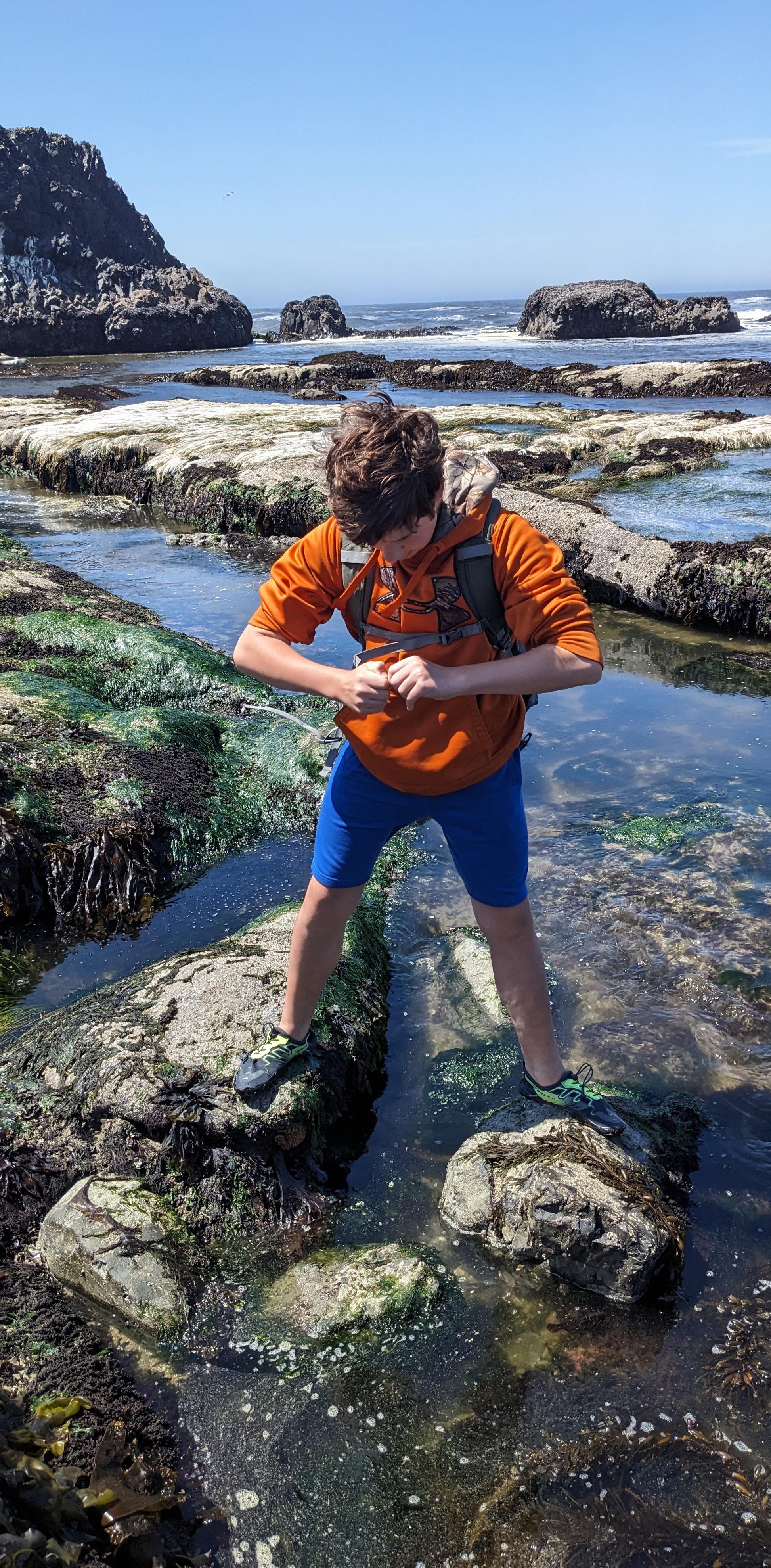
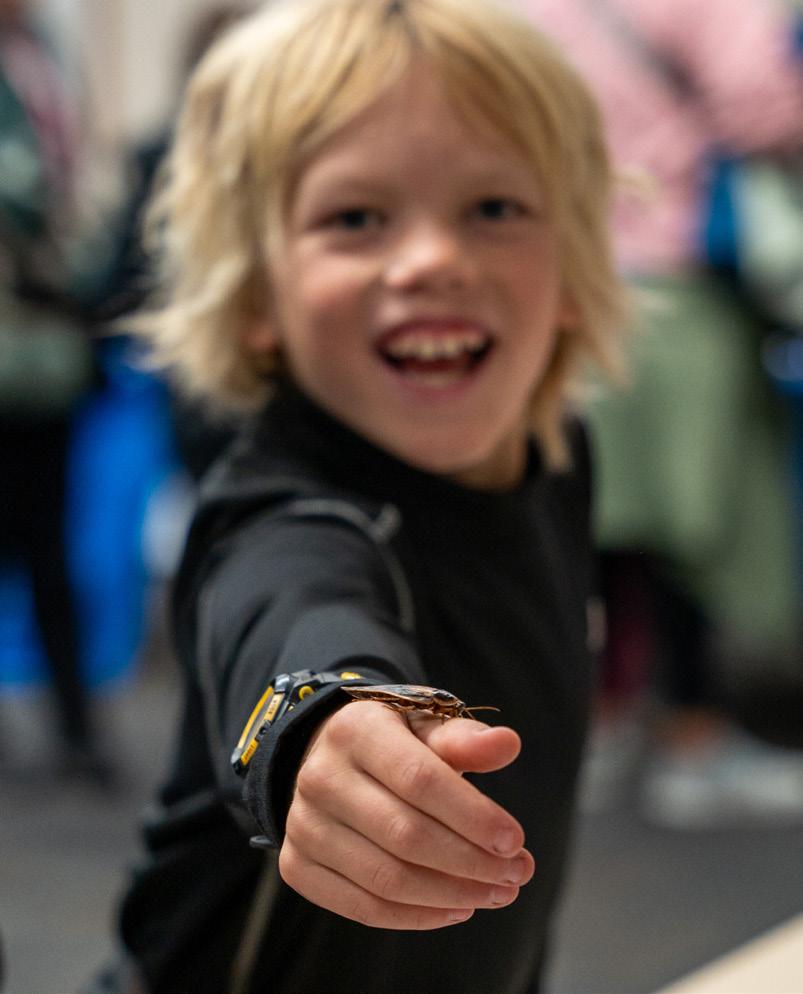
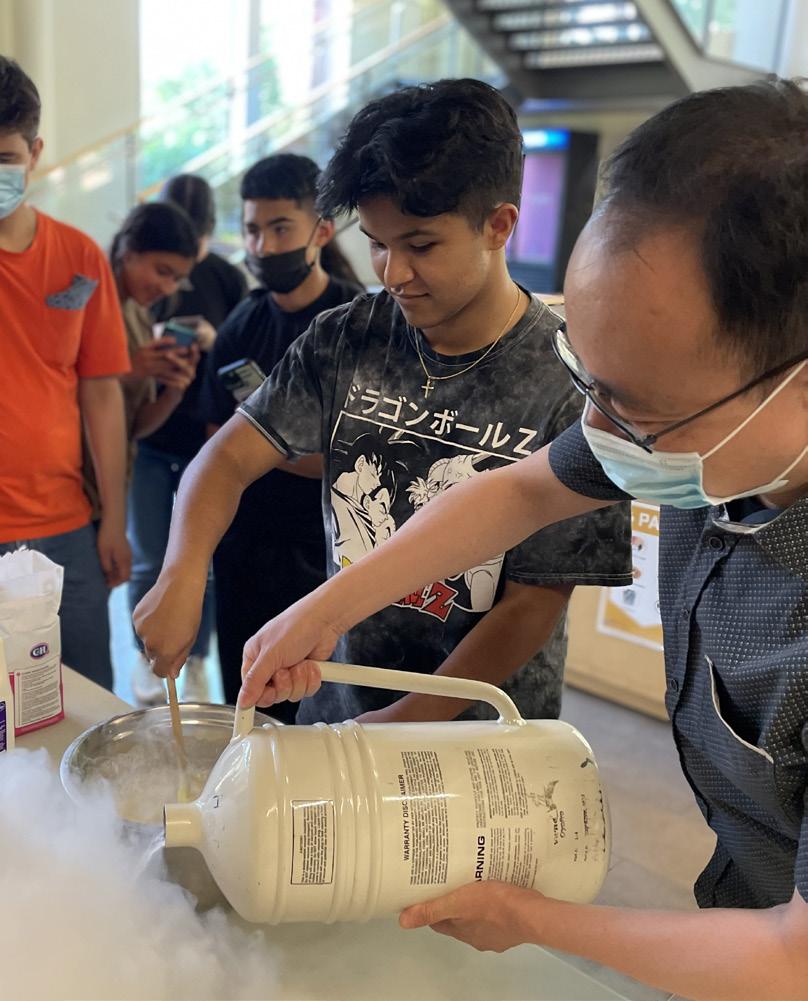
Building Bridges
Building Bridges
Spreading the love of science to everyone
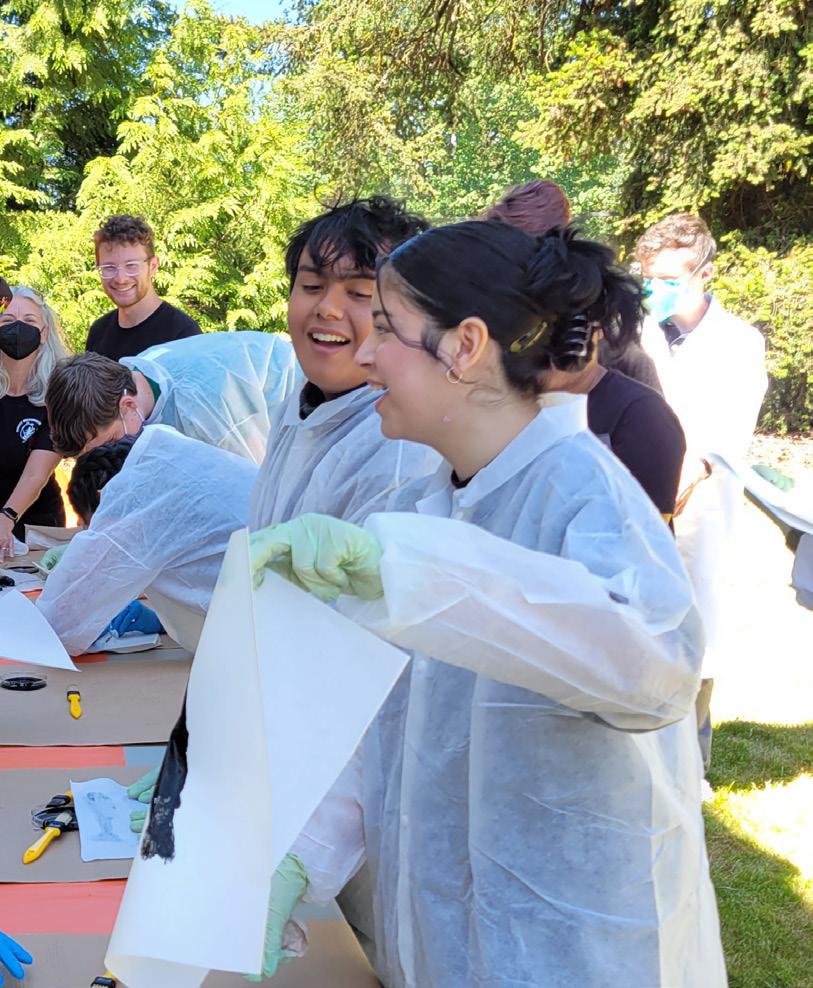
22 OREGON STATE UNIVERSITY COLLEGE OF SCIENCE
At the heart of the College of Science is a deep commitment to service and nurturing science understanding. Our guiding plan underscores our drive to service locally, nationally and globally. Across our seven departments, we are involved in initiatives aligned with our mission of community service. Over the past year, the College supported community-focused events, including Discovery Days, Juntos Family Day, and other community gatherings.
Discovery Days is held twice a year to engage with local elementary school kids for a hands-on STEM fair experience. This event gathered more than 1,500 students and 300 OSU students, faculty and staff volunteers. In collaboration with Open Campus, Juntos Family Day provided Latinx students and their families with a dynamic college exploration experience last spring.
Our departments also prioritize creating access to science education and research, fostering community relationships and developing needed services.
Chemists help high-school students find their passion
The chemistry department held the fifth annual Juntos Chemistry Overnight Camp in June. Twenty Latino high school students attended the camp from all over Oregon. The students participated in workshops and got an authentic taste of the OSU college experience. The department also held four lab tours for high school AP science students. Chemistry professor Marilyn Mackiewicz created a new week-long workshop called Ignite inSTEM designed to help students discover the wonders of designing nanomaterials.
Microbiology outreach makes science more colorful
The College of Science’s microbiology department created the Pernot Microbiology Camp to draw more local students from BIPOC, LGBTQ+, lowincome and other diverse backgrounds to the study of microbiology. Faculty in the department also offered a session on Microbiology for the Advocates
for Women in Science, Engineering and Math Club for both 5th grade and high school students. Microbiologist Jerri Bartholomew created the Art-Sci collaborative to build a bridge between art and science. This involves public galleries showcasing student work and local artists. The department also hosted internationally acclaimed microbiologist Jo Handelsman for the inaugural Berg Lecture. Open to the public, this lecture drew community members, students and faculty.
Mathematics outreach breaks down stereotypes
Members from the mathematics department organized the Math For All satellite conference. This event is an open and friendly space for people to gather and talk about mathematics, math education and how it relates to diversity, justice and equity. Professor Nathan Gibson organized a series of weekly Math Circle meetings for Franklin Elementary students. These circles aim to make mathematics fun, interesting, accessible and inclusive. The Association of Women in Mathematics OSU chapter also participated in many outreach events, including Discovering the Scientist Within, which aims to spark interest in science in young girls. The department also held its 38th annual Lonseth Lecture and invited alumna Corina Constantinescu (Ph.D. ’06) to talk about the “Mathematics of Inclusive Insurance.”
Integrative Biology shares research far and wide
The integrative biology department held its annual Doc Storm Lecture that drew more than 100 people to the LaSells Stewart Center. The Weis Lab participated in Meet a Scientist at the Oregon Museum of Science and Industry to educate visitors of all ages about the study of cnidarian-algal symbiosis and the threat of climate change on coral reefs. The lab also participated in OMSI After Dark. Students from the Cornelius Lab partnered with students from the College of Agricultural Sciences to plan Wild about Wildlife, a three-day summer camp for middle school students
where they learned about biological science through experiences and field excursions to Hatfield Marine Science Center and the Chintimini Wildlife Center. In June, the department held its annual Robert M. Storm Distinguished Lecture. This year speaker George James Kenagy, Professor of Biology and Curator of Mammals, Emeritus with the University of Washington, spoke about “Survival in the Desert: Coping with Heat, Aridity, and Scarce Resources.”
Statistics builds community connections
The statistics department joined in the Statewide Crop Load Project meeting to discuss results with vineyard managers and wine producers in Oregon. Faculty also co-led a workshop in Lincoln County for the Pandemic Resilient Cities project to engage local public health, city officials, school representatives and others to begin a co-creation process for a National Science Foundation proposal. They discussed the needs of the county and priorities concerning future pandemic preparedness.
Biochemistry and Biophysics outreach has national impact
The biochemistry and biophysics department was involved in middle school, high school and college outreach events. Faculty were involved in “How To Be A Scientist” and “Career Day’’ at local middle schools. At the college level, faculty gave a science career talk at Idaho State University. Associate Professor Alysia Vrailas-Mortimer, just received funding to expand FlyCURE RCN, a research coordination network that brings together faculty across the U.S. to create course-based undergraduate research experiences.
Physics brings science to high school students
The physics department held lab tours for Corvallis High School students and created a Zoom version for Madras High School. Several faculty members also did presentations for the Corvallis High School Science Club. The department has a new outreach coordinator that started Fall 2023.
IMPACT SPECIAL EDITION 2024 23
Far left: Students from the Jamie Cornelius Lab helped plan Wild about Wildlife, a three-day summer camp for middle school students where they learned about biological science through experiences and field excursions to Hatfield Marine Science Center and the Chintimini Wildlife Center. Photo by Victoria Quennessen. Top: A student discovers the joy of roaches during Discovery Days. Middle: High school students use liquid nitrogen to create homemade ice cream during the fifth annual Juntos Chemistry Overnight Camp. Bottom: High school students work on fish rubs during the Pernot Microbiology Camp.
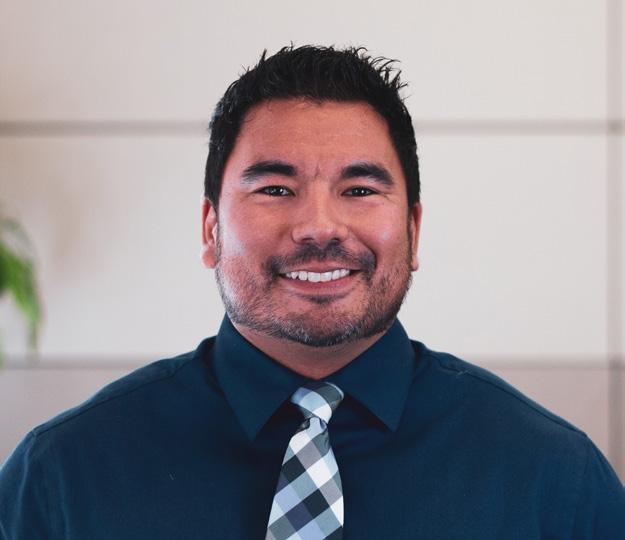
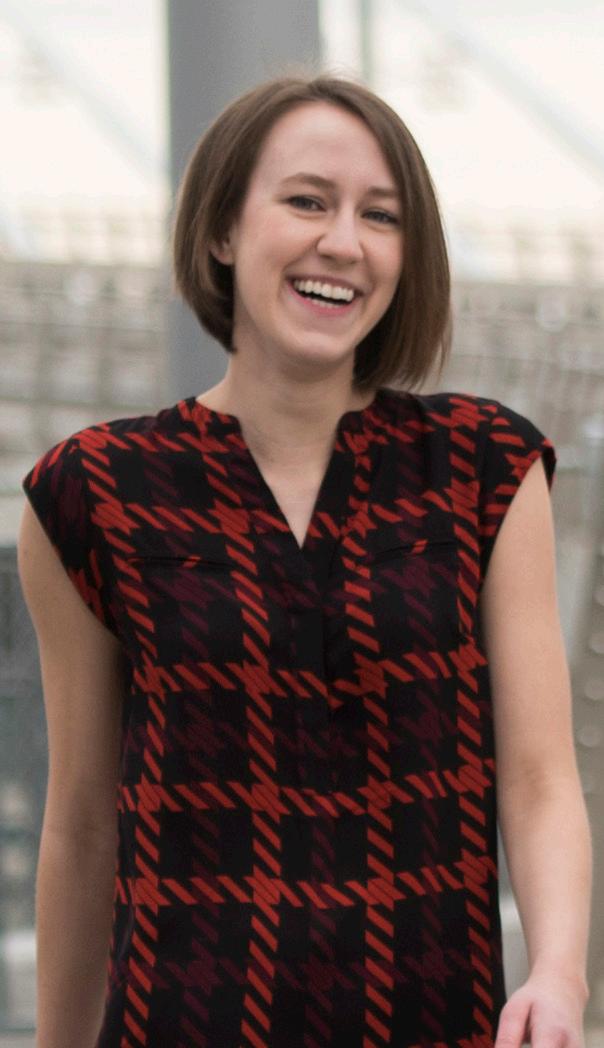
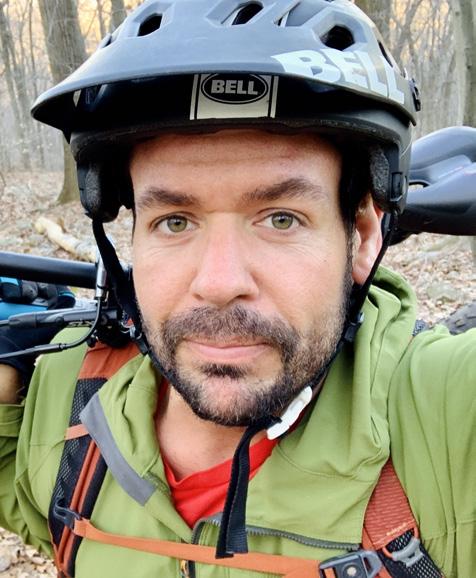
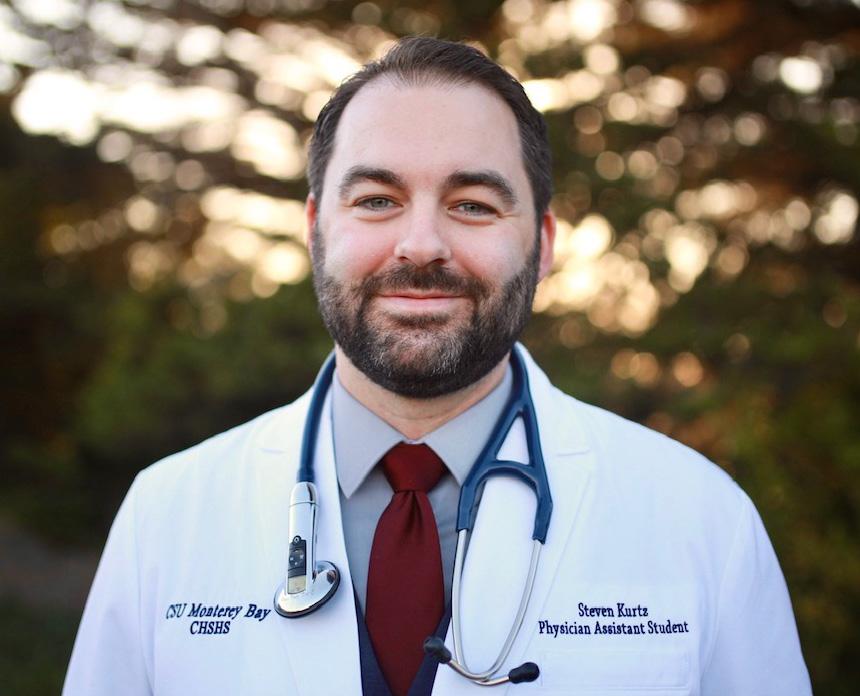
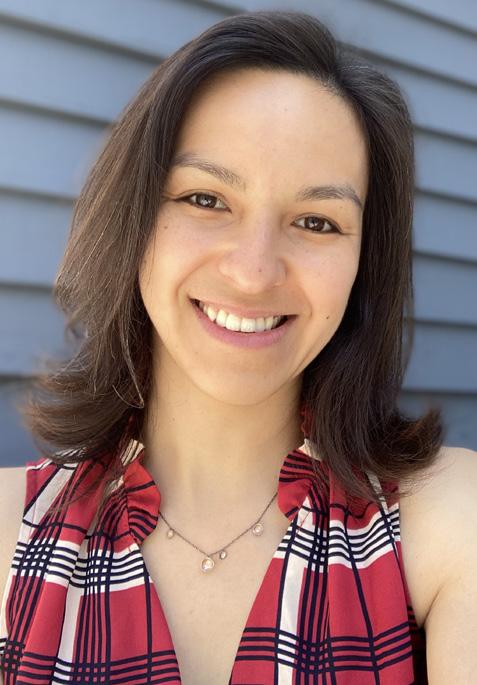
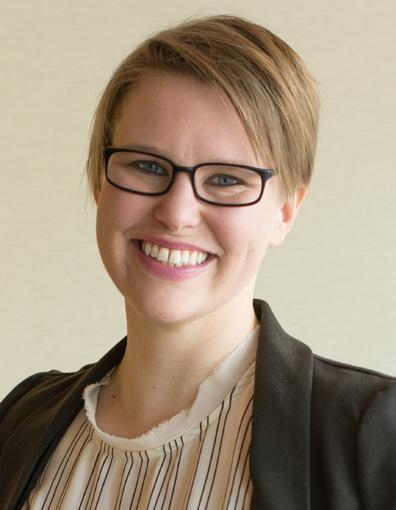
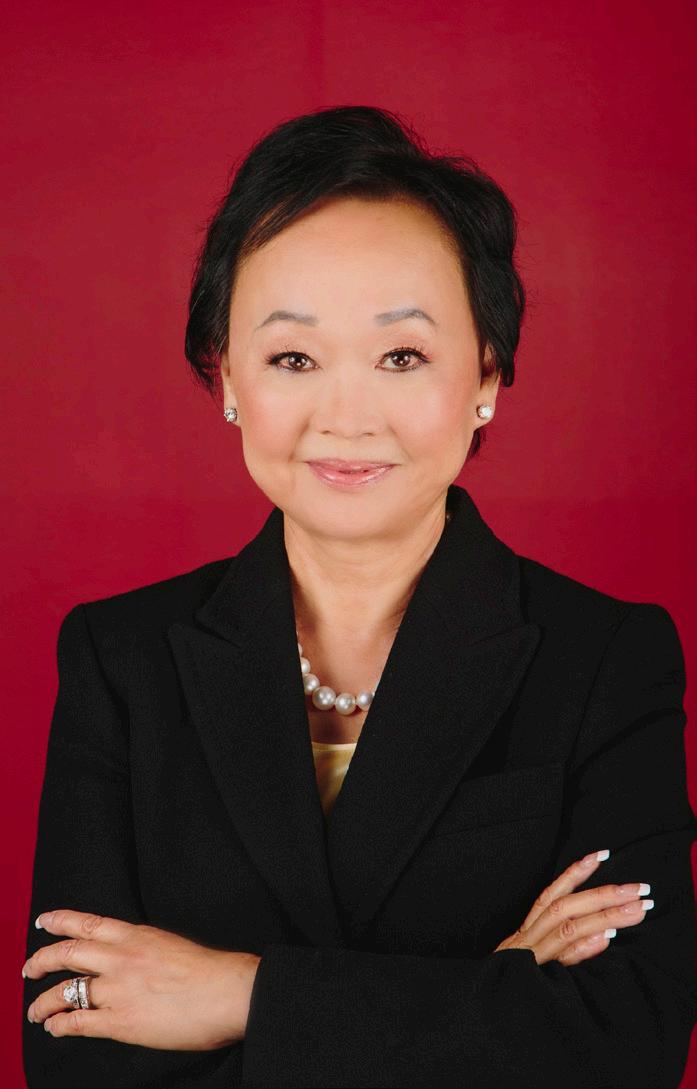
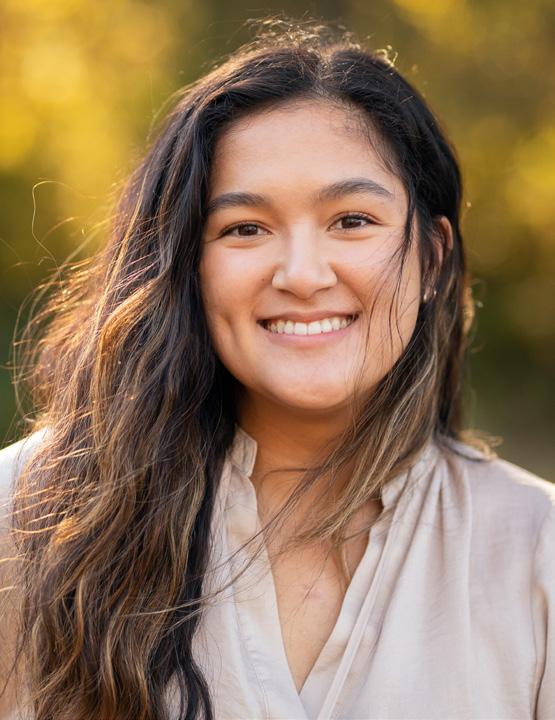 Charlotte
Stephen
Stephanie
Justin
Peggy
Kacey
Tari
Charlotte
Stephen
Stephanie
Justin
Peggy
Kacey
Tari
24 OREGON STATE UNIVERSITY COLLEGE OF SCIENCE
Sasha
College to Career
These science alumni transformed OSU experiences into amazing careers
Justin Ihara (Mathematics and Computer Science ’09) was drawn to Oregon State University by his passion for solving complex problems. As a mathematics and computer science major, Ihara developed problem-solving, research and collaboration skills that are crucial to his current role as MES Architect at Axonics, Inc. Ihara contributes to diverse applications, from vaccine development to cancer treatment. And he’ll be the first to tell you: “Software engineers still need to have people skills.” He learned plenty at OSU as president of his dorm, Honors College Council member, Faculty Senate member, tutor, bug zoo volunteer and much more.
For Corvallis native Kacey Little (BioHealth Sciences ’19), choosing OSU meant choosing an acclaimed health science program close to home. Now, Little delves into disease origins, causes and distribution as Epidemiologist and Research Coordinator at Comagine Health. Her major equipped her with all the fundamental skills required in her current career path, including critical thinking when reading scientific journals, considering complexities around health issues and data analysis. She also built connections with instructors and TAs, who encouraged her to pursue her Master’s degree and a career in public health.
Stephanie Busch (Biology ’09) credits OSU for providing a foundation that proved instrumental in her role as Injury Prevention Manager for the Vermont Department of Health. There, she collaborates on opioid overdose prevention, suicide prevention and wellness initiatives. While at OSU, Stephanie played club rugby, was a Peer Health Advocate, did an international
internship teaching high school health and science in Tanzania, had an oncampus work-study position in the Tanguay Zebrafish Lab and was in the Anthropology Club. Those hands-on experiences, she says, became excellent talking points in future interviews.
The College of Science left an indelible mark on Sasha Rose (Biology ’08), who is now Research Director at Insmed Incorporated. He contributes to groundbreaking discoveries and the development of therapeutics for rare diseases, energized by the transformative impact of his work. Choosing OSU for its strong science program, Rose’s trajectory shifted from pre-med to biomedical research. He credits professors like Janine Trempy and Luiz Bermudez for their pivotal roles in his journey. Rose’s core classes and hands-on research laid the foundation for his career in the biotech industry.
Charlotte Soderberg (BioHealth Sciences ’16), now a clinical pharmacist at PacificSource Health Plans, was encouraged by mentors who praised OSU’s joint Doctor of Pharmacy program with Oregon Health and Science University. Soderberg’s undergraduate journey at OSU equipped her with problem-solving skills, critical thinking and a foundation for lifelong learning. Her favorite undergrad memories involve late-night study sessions and the friendships she forged. As a pharmacist, Soderberg loves that there’s so much more to her work beyond pill counting— she has a crucial role in ensuring patients receive optimal medication therapies.
Students at OSU’s Corvallis campus love eating at Panda Express. For Team Science, the location will always
be synonymous with Peggy Cherng (Mathematics ’71), co-CEO of the famous chain. Cherng earned a master’s degree in computer science and a doctorate in electrical engineering. She left a demanding career in the defense industry to launch Panda Express with her husband in 1982, creating one of the first purpose-built point-of-sale systems in the fast-food industry. Today, their company is the largest family-owned and operated Asian restaurant chain in the U.S. That’s one successful alumna!
Tari Tan’s (Biochemistry and Biophysics ’08) OSU connections showcase the special community that makes up Team Science: “The mentors and the community I had at OSU are still very much a part of my life today. None of my friends have the same connection to their alma mater or their former professors that I do to mine.” Tan was selected for the 2022 Young Alumni Award in the College of Science because of her extraordinary professional accomplishments achieved within a decade after graduating with her most recent degree. She is now Assistant Dean for Educational Innovation and Scholarship, Office for Graduate Education at Harvard Medical School.
Steven Kurtz (BioHealth Sciences ’17) enjoyed a diverse educational journey at OSU thanks to a curriculum that covered numerous areas. He values the strong science background he developed as an undergrad, which empowered him to earn an M.S. in Biotechnology at Johns Hopkins University and then an M.S. in Physician Assistant Studies at California State University Monterey Bay. He credits OSU professor Devon Quick for her impactful guidance in advanced anatomy and physiology.
IMPACT SPECIAL EDITION 2024 25
science.oregonstate.edu Join us on social! Study everything under the stars ... and the stars too! Explore science at Oregon's top science university. Do hands-on research alongside faculty mentors. Create lifelong connections. Graduate career ready. Half the STEM students in the state choose OSU for good reason—science is better here. @OSUScience @OSUScience @OSUScience @OSUScience company/osuscience 128 Kidder Hall Corvallis, OR 97331






































































 Catherine Raffin’s love of insects and the outdoors has taken her from exploring fields in Corvallis, where she discovered this velvet ant (left), to camping in Siuslaw National Forest (top and right), to a stream survey technician career after graduation.
Catherine Raffin’s love of insects and the outdoors has taken her from exploring fields in Corvallis, where she discovered this velvet ant (left), to camping in Siuslaw National Forest (top and right), to a stream survey technician career after graduation.
















 Charlotte
Stephen
Stephanie
Justin
Peggy
Kacey
Tari
Charlotte
Stephen
Stephanie
Justin
Peggy
Kacey
Tari